Archived Storm Damage Blog Posts
Storm Safety for Your Beacon, NY Home
8/19/2024 (Permalink)
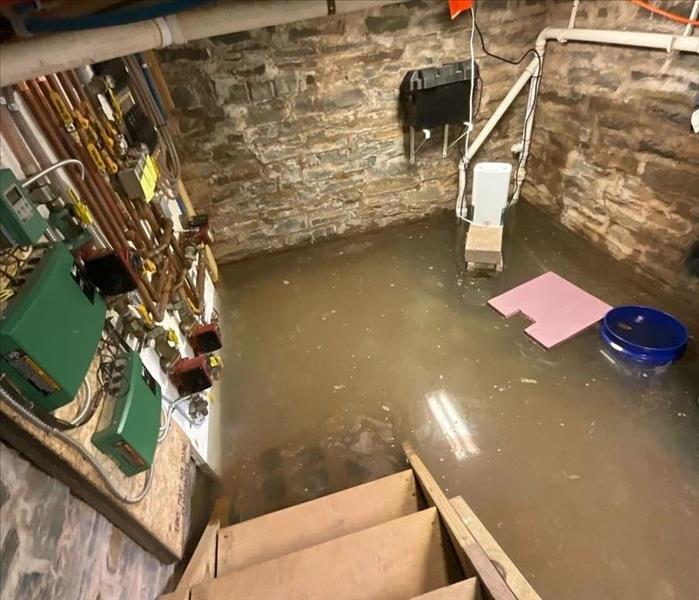 One of many homeowners that SERVPRO recently helped during terrible flooding conditions in the middle of August. SERVPRO to the rescue!
One of many homeowners that SERVPRO recently helped during terrible flooding conditions in the middle of August. SERVPRO to the rescue!
We’re all used to thunderstorms in the Hudson Valley, and sometimes damaging ones due to our location right on the Hudson River, but we don’t often think that they can also be dangerous or deadly. Just because they happen frequently does not mean they shouldn’t be taken seriously every time.
Severe thunderstorms can produce high winds, heavy rains, hail and lightning if conditions are right. Think of our communities just over the border in Connecticut that got what they’ve called “1,000-year flooding” in August of 2024. And in a small town in Delaware County, NY, flooding from thunderstorms took out the basements in homes of almost an entire street!
These were very unusual circumstances but regardless, being aware and thorough with storm safety can help you can evade many of the issues that could arise due to storms.
Storm Safety for Every Element of Your Home
Outside of your home-
Storms can lead to serious household damage that can be stressful and overwhelming to deal with. To help prevent this damage from occurring, you can take several steps:
- Inspect your roof regularly for missing or loose shingles. Look in the attic for any wet or damp spots (or even mold growth).
- Clean out your gutters at least twice per year. Debris and leaves can clog up the downspouts and cause water intrusion.
- Bring in or secure patio furniture, potted plants and any other objects that could become projectiles in high winds. This includes pool furniture, outside toys, trampolines, pet supplies and garbage cans. We’ve all seen garbage cans flying down the sidewalks and roads from time to time.
- Consider installing a lightning protection system for your home.
- Trim trees near your home regularly to reduce the chances of dead limbs falling on your home. If you notice any near power lines, notify your electric provider immediately so they can deal with them quickly. Don’t try to trim any branches near power lines or transformers.
Inside your home-
If severe weather is on the way, the best thing you can do is stay put where you are or stay safe at home—and having a plan in place can help you make that happen:
- Keep a weather radio, flashlights and batteries and spare car chargers or cell phone battery chargers as part of your emergency preparedness kit.
- Designate a safe area of your home for your family to shelter from the storm—it should be an interior room without any windows. Make sure all family members know the plan and location and that your pets can be with you indoors too.
- Use surge protectors on every outlet in case of lightning strikes.
When you are away from home-
If you will be going out of town for more than a day, it’s wise to make sure your home is still protected from a storm that might come through while you are away.
- Unplug all appliances and electronics in case of lightning strikes.
- Secure all outdoor furniture and possible projectile objects before you go away just in case. Think along the lines that pretty much anything outside can be a dangerous projectile.
- Be sure a trusted neighbor or family member knows you are going out of town so they can contact you if any issues arise. This is also helpful when it comes to home invasions that can occur when there’s less security.
*If you are travelling for a period of time, notify your homeowners insurance company so they can be aware as well. Insurance companies have great ideas and resources about things that should be done to protect your home, no matter the time of year.
If your home sustains any kind of storm damage, from roof leaks to flooded basements, SERVPRO of Western Dutchess County is Here to Help® 24/7. Contact us today! We’ll be with you step by step, working with your insurance company to help get you back to preloss condition quickly and effectively. Making it “Like It Never Even Happened.” LOCALLY in the Hudson Valley since 1992.
How to Protect Your Wappingers Home from Wind Damage
8/22/2023 (Permalink)
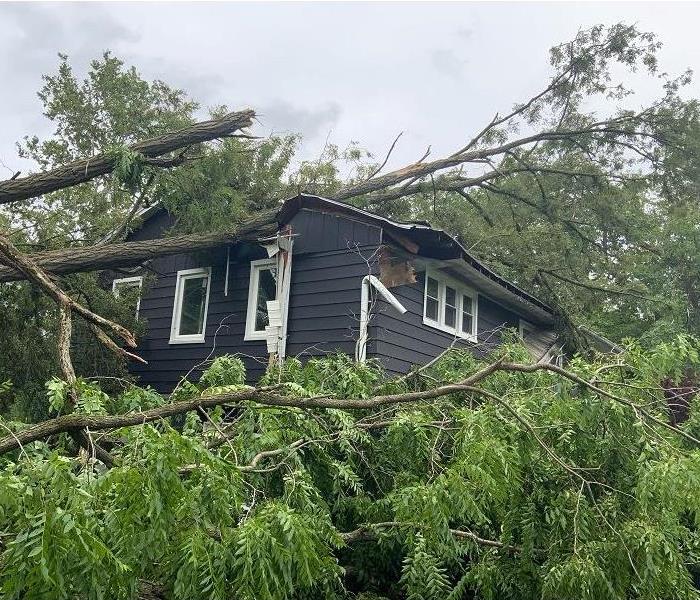 Taking protective steps ahead of time, even yearly, can help prevent significant structural damage in high winds.
Taking protective steps ahead of time, even yearly, can help prevent significant structural damage in high winds.
Protecting Your Wappingers Falls Property from Damaging Winds
Do you know how to protect your property from damaging winds and why?
There are many concerns that come with severe storms, not just the heavy rain or even snow, but potentially damaging winds are always a threat to keep in mind. These winds, which can come with little to no notice, can be devastating and cause long-term structural impacts without thinking ahead and protecting your home or building.
When Wind Becomes Damaging
While many consider damaging winds to come from a tornado or hurricane, those are not the only times when they may come into play. Traditionally, damaging winds are considered those with wind speeds exceeding 50–60 mph. They can stem from a strong thunderstorm and are called “straight-line” winds, which cause damage much like tornadoes and, yet the damage is different. We have definitely experienced our fair share of straight-line storms and the damage they cause. We often feel like these are actual hurricanes due to the amount of rain and force of wind, and while these storms certainly cause huge amounts of problems, the Hudson Valley doesn’t often feel the wrath of a true hurricane.
These winds can also cause loose objects on your property to become dangerous projectiles. Cars parked outside, windows and the roof are especially vulnerable and can take the brunt of this damage, and if the damage is extensive, water damage can happen inside your home as well.
Protecting Your Property from Damaging Winds
There are several ways you can protect your property from damaging winds but keep the “Two R’s” in mind: Reinforce and Remove. A few of these are listed below:
- Have a professional reinforce your garage door.
- Make it a yearly or bi-yearly plan to have your roof checked and repaired as needed.
- Remove and/or anchor loose objects on your property, items such as trash cans, grills, small plastic pools, trampolines, outdoor furniture, and toys that could be moved or tossed by the wind.
- Hire a professional to remove or trim back large or dying trees and branches that could fall over onto your home or someone else’s.
- Have your gutters cleaned professionally once a year, especially if there are trees growing near them. Leaf collection or heavy snow can cause water intrusion if the gutters can’t drain properly.
Not all high wind circumstances come with advanced warning, but some of these action items could be the difference between damage and little-to-no damage.
Also, when building a new home or renovating an older home, be sure the windows, walls and doors are up to code for the weather in your area. Contact your local building department for their codes.
If your home ever be hit by damaging winds and resulting water damage, our highly trained storm damage restoration specialists at SERVPRO® of Western Dutchess County are here to help with the cleanup and restoration 24/7 with an emergency response. Call us at 845-831-3600. We’re here to help make it “Like it never even happened.”
How to Keep Flooding at Bay in East Fishkill
10/5/2022 (Permalink)
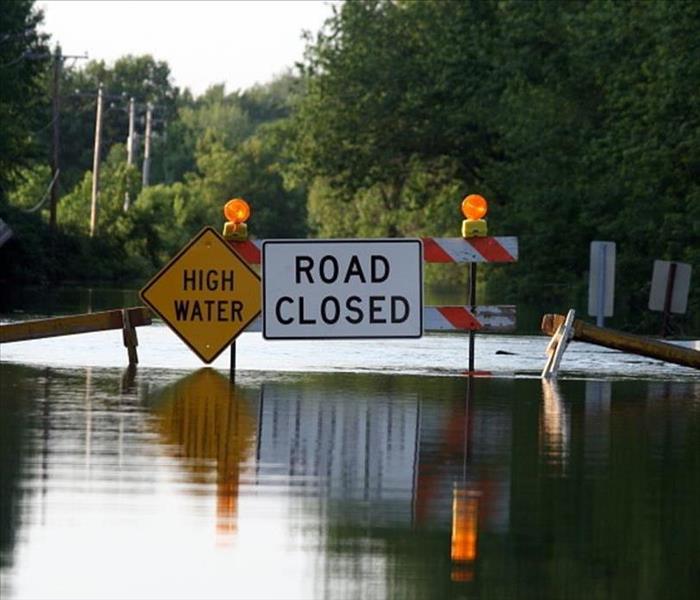 Protect your home from flooding both inside and out. Contact SERVPRO for water damage restoration in the event of a disaster!
Protect your home from flooding both inside and out. Contact SERVPRO for water damage restoration in the event of a disaster!
All homeowners in Dutchess County need to take steps to protect against flooding, even if you’re in a low-risk area. It takes less than an inch of water to do serious damage to your home, and with the unpredictability of weather, that could happen in under an hour.
You can take steps both inside and outside of your home to protect against flooding, but it all starts with understanding our local risks. Here in Dutchess County, we face a higher risk of flooding than most, primarily due to our relatively flat terrain and our close proximity to a large river and it's tributaries that can overflow into our streets during storms.
After you fully know what types of weather we may face, you can begin to plan against them.
Protecting Your Home From the OutsideHeavy rainfall can come through out of nowhere, and if you haven’t taken time to prepare your property, you could be at serious risk of suffering water damage. Ensure that your gutters are working properly, and consider adding materials like mulch or gravel to assist with water distribution around your home.
In addition, you can use landscaping techniques like rain gardens that feature bushes, flowers and small trees to absorb the water before it has a chance to cause a flood. You can also use organic materials like mulch or pine straw to increase water absorption near your home’s structure.
When done properly, these upgrades can give your home a layer of protection, allowing you to feel safe during the next extreme weather event.
Flood Protection From the InsideExternal flooding sources can wreak havoc on your foundation, meaning that you must seal any cracks immediately and think about further steps like installing a sump pump to remove excess water during a severe storm. If you do install a sump pump, make sure to alert your homeowner's insurance company so they can add that coverage on to your policy.
Flooding can also originate indoors from faulty plumbing or faucet leaks, but performing simple home maintenance can go a long way. Monitor your home’s pipes for any leaks and install leak detectors in any locations that could see frequent moisture.
Whatever the potential causes, floodwater is dangerous and will damage documents and photos quickly, so keep these items in waterproof containers on high shelves. In addition, practice an emergency plan with your family so that everyone knows where to go and what to do in case you experience a flood.
Experienced water damage in your home? Call SERVPRO today to get your restoration started and completed faster. 24/7, SERVPRO of Western Dutchess County is always here to help with an emergency response for your property damage.
Storm Damage is the Largest Homeowner's Insurance Claim Every Year in Dutchess County
8/29/2022 (Permalink)
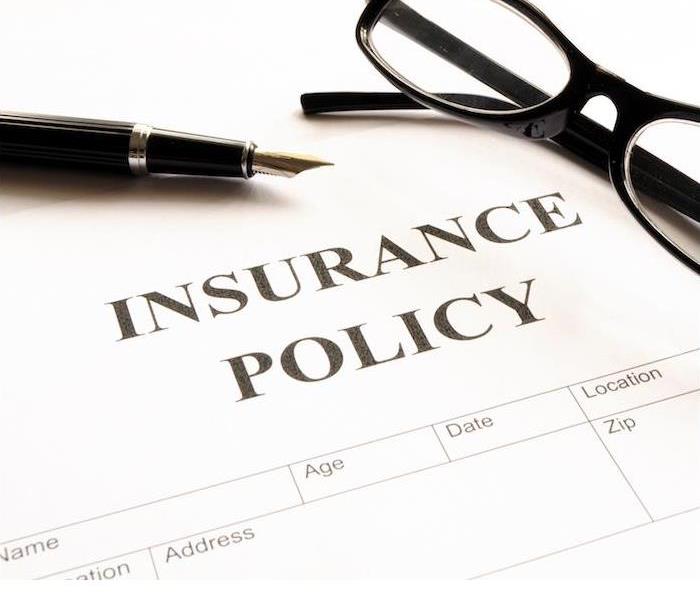 When storm damage affects your home, call SERVPRO of Western Dutchess County, your local leader in property restoration!
When storm damage affects your home, call SERVPRO of Western Dutchess County, your local leader in property restoration!
Every year, millions of American homeowners, including some right here in Poughkeepsie and the Hudson Valley, have to file a claim on their homeowners insurance because their home has been damaged and needed restoration services.
Can you guess the most common hazards homeowners face?
Severe weather issues, such as wind, hail and rain, are among the most common reasons that homeowners need restoration help. Storm damage can affect your home in a myriad of ways!
Accidents and appliance malfunctions are also common culprits when homeowners have to call for restoration help.
While you can’t prevent all the issues that might threaten your home, you can take an important step if your home is damaged to ensure it’s limited and remedied quickly.
Getting help with restoration and repair work as soon as possible is the most important start when you've suffered storm damage. Water damage and mold damage can begin to take hold within hours, so timing is vital to successful home restoration. Secondary issues can be significant and come with a high price tag.
SERVPRO Is Always HereOur teams are available to help you 24⁄7, especially if you’re dealing with an emergency. That means you can call us on nights, weekends and holidays, too. We have a live team ready and on stand-by when you need it the most.
There are plenty of reasons to choose SERVPRO beyond our speed and availability. They include:
Our highly skilled and trained technicians. You can rest assured that our team members have all the certifications and state-of-the-art training needed to provide the highest level of restoration services possible. We want to help you restore your home in the most effective and efficient ways possible.
Our access to the most up-to-date technology. Because we’re affiliated with SERVPRO, a trusted national brand, we have access to the type of technology you would expect with such a well-known partner. We bring that access here to the communities we serve.
Our length and experience in the business. Our SERVPRO franchise began locally over 30 years ago. We have the long term experience and expertise to handle any storm damage issue you might have. Our staff lives, works and raises their families locally so there's no waiting for someone from outside of the Hudson Valley to finally get to you. Trust the local leader, SERVPRO of Western Dutchess County.
If your home is damaged due to fire, water or any other cause, you can always count on us for restoration assistance. We have teams who are available 24⁄7 in the event of an emergency. Contact us at any time to learn more about our restoration services and how we can help your family.
How Storm Damage Can Affect Your Beacon Home
8/26/2022 (Permalink)
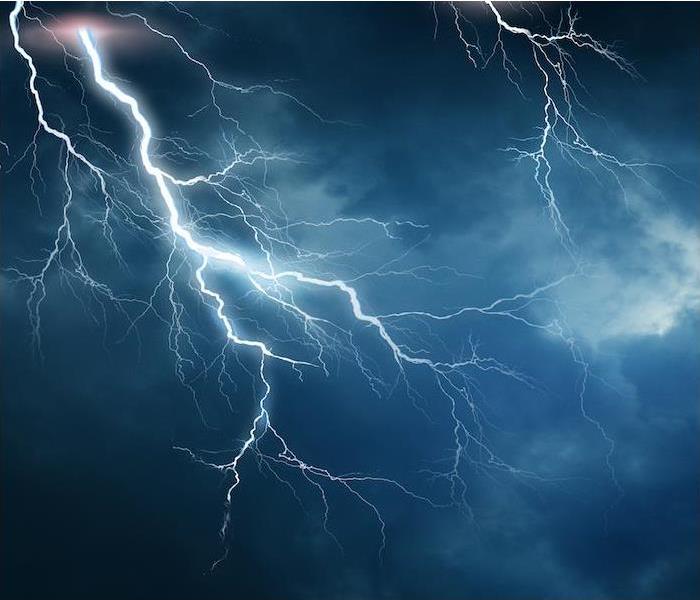 Preparing and maintaining your home for potential storms can make a huge difference when it comes to storm damage in your home!
Preparing and maintaining your home for potential storms can make a huge difference when it comes to storm damage in your home!
Extreme weather events are a common occurrence, and regardless of the house you have, everyone can face some risk of suffering damage. These severe storms can bring high-velocity winds, hail and many other hazards in minutes.
The type of storm, combined with your home’s condition, the landscape, drainage and many other factors, will help determine the level of damage that you might see.
Although all of us have a good amount of knowledge on storm damage, it’s particularly important for us here in the Hudson Valley, where severe weather is common.
Flooding and high-powered storms are the most common events that we see, so our government has created this Weather Emergency Preparedness Site so that we can be ready for what may happen in our region.
Take a look at the main types of storm damage and how you can mitigate or even prevent them from happening:
Wind
Wind damage happens when buildings experience high gusts, but this doesn’t only happen with tornadoes and hurricanes. Thunderstorms and Straight Line Storms can also cause dangerous winds of up to 100 mph.
These wind speeds mean that your home could be struck by heavy debris like mailboxes, trees, lawn furniture, rocks and small vehicles.
You should always take shelter far from windows or glass doors and heed local weather alerts to know what’s coming. Also, take time before the storm arrives to clear limbs, rocks or other debris from your property.
Water
When storms produce heavy rainfall, water can pool and begin a flash flood in under 30 minutes. This means that thousands of gallons could be poured onto your land, seeping inside your doors and through the cracks in your walls.
To reduce the amount of water that your home sees, you might want to landscape your property in ways that will direct water away instead of pooling it nearby. You can also build a rain garden on your property, which can help soak up heavy rainfall and reduce flooding risks.
Those living in areas prone to basement flooding can trust in sump pumps in the basement areas to help get rid of pooling water efficiently.
Lastly, keep your home in good condition with regular maintenance and upkeep and make sure your gutters and roof are clear of debris to prevent an overload of water from damaging your home from top to bottom.
Impact
The last main kind of storm damage is from impacts. This may seem obvious, but the causes can be anything from a fallen tree to a mailbox flying through the air. The best way to avoid disastrous impacts is to ensure no trees around your home are at risk of falling or losing limbs.
Weather disasters resulted in an estimated $145 billion in damages last year in this country. This is why it’s important to follow these steps and take action before the storm strikes. This could save you money and stress associated with recovering from a disaster.
If your home is damaged by storm damage, call SERVPRO of Western Dutchess County immediately. We have teams of experts that will come in fast and have your home back to its preloss condition.
When you suffer storm-related damage to your home or business, it’s important that you know who to call! Contact us today to get your storm damage restoration started faster.
How Does a Storm Safety Plan Help You Prepare For Severe Weather in Beacon?
6/13/2022 (Permalink)
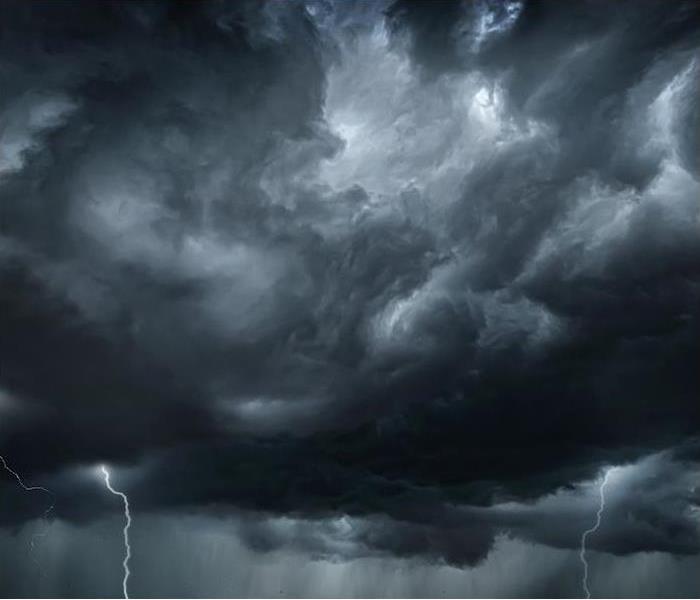 It's not just winter weather that can be threatening, make sure you have a spring and summer storm safety plan too!
It's not just winter weather that can be threatening, make sure you have a spring and summer storm safety plan too!
Severe weather can be frightening and dangerous. Not to mention the fact that there are around 100,000 thunderstorms throughout the United States every year, bringing heavy rain, strong winds, hail and flooding, all putting you and your home at risk.
In New York, we are often led to believe that the winter is the time for fear, and while those winter storms definitely cause concern, it’s the spring and summer storms that frequently do the most damage. Here in Beacon, the Hudson River runs right through town, putting property in this area at risk of flood damage.
Unfortunately, we can’t control the weather, but we can take action ahead of time to be prepared for when it happens.
Among the steps you should take, creating an emergency kit and forming a communication strategy with your family are two of the most important. We’ll discuss a variety of ways to help you prepare for storms, and ideally, reduce the impact that they have on you and your home or business.
Your Severe Weather Communication StrategyAs they often say “communication is key,” and this is especially true during dangerous weather. By knowing where your loved ones are, you can focus on yourself and everyone being safe in the home instead of being distracted.
Along with family communication, listening to your local officials for emergency alerts is important to stay informed about the current situation. Cellphones and television work well, but storms can knock out the power or a signal, so an NOAA weather radio is a good thing to have.
Finally, creating a communication strategy between the people in your household is crucial. This includes designating a room in the home to take shelter in, ideally in the center of the home with no windows nearby.
Your Severe Weather Emergency KitThe art of being prepared goes far beyond proper communication and planning—it also requires you to have the right materials as well. Typically it’s smart to keep at least 72 hours worth of food, water and medical supplies (including prescriptions) in case of emergency. Be sure to include family pets in your prep.
If you want to be extra prepared, pack batteries, flashlights, clothes, blankets and a portable battery pack for any devices. Once you’ve gathered the items and packed them neatly, store the emergency kit in your chosen safe room so that it’s ready to use when necessary. Pet food, collar, leashes, paperwork and even their favorite bed or crate can be very helpful in emergencies.
Your Severe Weather Aftermath ChecklistAfter the extreme weather is over, you should take a few additional steps in order to stay prepared for the next event. Taking account of how your planning and strategy worked or didn’t work will allow you to improve it and stay ready.
Lastly, once it’s safe to exit the home with your family, take some time to check your property for damage.
While most damage is immediately visible, it’s a good idea to check your roof, windows, doors, and crawl space or basement for any signs of moisture or other damage indicators.
While we hope that your home is pristine, storms can do damage to any home, so knowing the next step is important. At SERVPRO of Western Dutchess County, you can rely on us to answer immediately and be there right when you need us.
If you discover storm damage to your home or business, you can count on SERVPRO to handle the restoration. We’re here 24⁄7 to spring into action—get in touch with us today.
How to Be Winter Storm Ready In Your Poughkeepsie Home
1/21/2022 (Permalink)
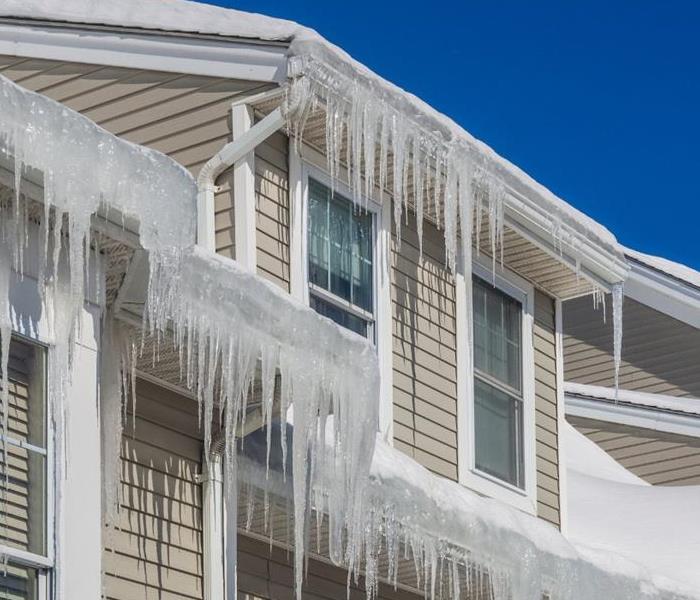 You can't ever be too storm-ready, so prepare your family, your home and your pets from the brutal damage a winter storm can make!
You can't ever be too storm-ready, so prepare your family, your home and your pets from the brutal damage a winter storm can make!
We’re all used to winter storms in Dutchess County, some drop a ton of snow, some blustery and frigid and some bringing that nasty coating of ice. Just because they happen frequently does not mean they shouldn’t be taken seriously every time.
Severe snowstorms can produce white out conditions, dangerously low temps, blowing drifts and amounting inches to feet, if conditions are right. It’s wise to prepare your family, your pets, and your home every year to help evade and be ready for issues that can arise and possible extreme situations.
Storm Safety for Every Element of Your Home
Outside of your home-
Storms can lead to serious household damage that can be stressful to deal with. To help prevent this damage from occurring, you can take several steps:
- Inspect your roof regularly for missing or loose shingles. Throughout the year, take a look in the attic for any wet or damp spots (or even mold growth). Be mindful of any noticeable drafty areas and have them taken care of asap.
- Clean out your gutters at least twice per year. Debris and leaves can clog up the downspouts and cause water intrusion. In the winter months, accumulating and then melting snow (from attic heat) can cause ice buildup in your gutters. This can cause an ice dam which forces water behind the gutters and into the walls and rooms of your home. Keep your attic well ventilated and cool to help avoid this hassle as well.
- Bring in or secure patio furniture, potted plants and any other objects that could become projectiles in high winds. This includes snow removal equipment, ice scrapers, outside toys, holiday decorations, trampolines, pet supplies and garbage cans. We’ve all seen garbage cans flying down the sidewalks and roads from time to time. These also can cause traffic issues.
- Trim trees near your home regularly to reduce the chances of dead limbs falling on your home. Additionally, this helps keep gutters from clogging. If you notice any near power lines, notify your electric provider immediately so they can deal with them quickly. Don’t try to trim any branches near power lines or transformers.
Inside your home-
If severe weather is on the way, the best thing you can do is stay put where you are or stay safe at home—and having a plan in place can help you make that happen:
- Keep a weather radio, flashlights and batteries and spare car chargers or cell phone battery chargers as part of your emergency preparedness kit. ? Designate a safe area of your home for your family to shelter from the storm—it should be an interior room without any windows. Make sure all family members know the plan and location and that your pets can be with you indoors too.
Some tips for avoiding frozen pipes-
The frigid temperatures can linger for days. Often, uninsulated areas of your home are the most vulnerable to water pipes freezing.
-Check garages, basements, crawl spaces, laundry rooms, utility rooms and renovated areas to make sure the pipes and/or walls are insulated enough.
-A simple 60-watt light bulb in small rooms can give off enough heat to help avoid pipe issues.
-Try wrapping uninsulated pipes in Styrofoam pool noodles, they very inexpensive and easy to do.
-Only use a space heater when you are home, in the same room and never plug it into an extension cord.
-Insulate drafty areas around windows and doors.
When you are away from home-
If you will be going out of town for more than a day, it’s wise to make sure your home is still protected from a storm that might come through while you are away.
Do NOT turn the heat off, never below 55 degrees or you will come back to an igloo
- Unplug all appliances and electronics.
- Secure all outdoor furniture and possible projectile objects before you go away just in case. Think along the lines that pretty much anything outside can become a projectile.
- Be sure a trusted neighbor or family member knows you are going out of town so they can reliably check inside your home and contact you if any issues arise. This is also helpful when it comes to home invasions that can occur when there’s less security.
If your home sustains any kind of storm damage, we’re here to help 24/7. Contact SERVPRO of Western Dutchess County as soon as possible. We’ll be with you step by step, work with you and your insurance company to help get you back to preloss condition quickly and effectively. Making it Like it never even happened, locally, since 1992.
Safety in Dutchess County: Dispelling Some Common Myths About Lightning
11/11/2021 (Permalink)
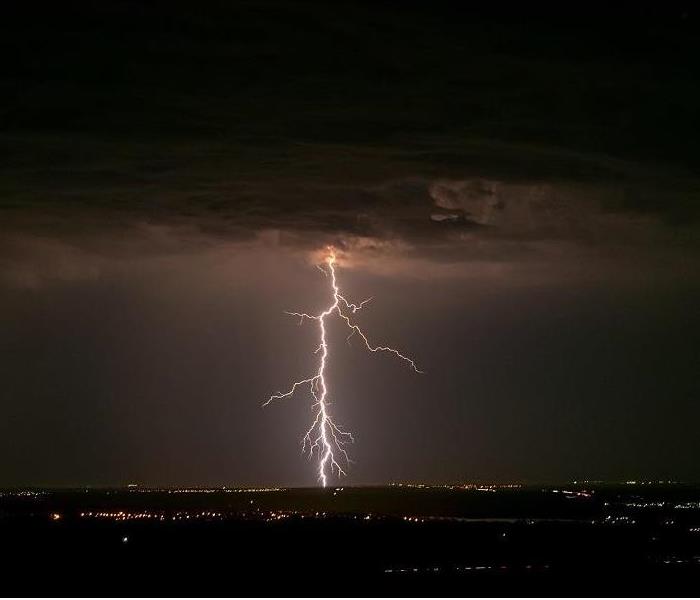 A clear understanding of lightning truths can help you and your family stay out of harm's way!
A clear understanding of lightning truths can help you and your family stay out of harm's way!
When it comes to severe weather, one of the biggest dangers that can impact those in its path would be lightning strikes. Flash flooding is more deadly, but lightning is still responsible for nearly 70 deaths and over 300 injuries every year in America—and because every single thunderstorm contains lightning, the chances of getting struck are rather high.
There are also quite a few myths about lightning that are frequently repeated, but mostly unsubstantiated. Understanding lightning safety is so important to protecting yourself and others during severe weather. Here are some of the persistent myths pertaining to lightning strikes and severe weather.
Dispelling a Few Common Myths Regarding Lightning Strikes
Myth #1: If you can’t see lightning, it is not a threat.
**Fact: Lightning is always a threat if there is a thunderstorm nearby.**
While thunder may sound dramatic, it is actually not thunder that is a threat in the event of a thunderstorm—lightning is. Lightning is actually what produces thunder, as the sound of the clap occurs from lightning striking either between clouds or toward the ground. That means that if you hear thunder, you are within a range to be struck by lightning even if you have not yet seen a strike.
Myth #2: “Heat lightning” is not a threat.
**Fact: “Heat lightning” does not exist, and is simply lightning that is too far away for thunderclaps to reach you.**
The concept of heat lightning is completely a myth. If you see lightning, even if you do not hear any thunder or it is not currently raining, you are within the potential range of a lightning strike and could be in danger. “Heat lightning” is simply lightning from a storm in the distance that may not have reached you yet.
Myth #3: If there is no rain, there is no threat of lightning.
**Fact: Lightning can strike away from the storm’s center.**
Lightning can strike away from a storm’s center, spanning a radius of nearly 10 miles. Even if it is not actively raining or storming in your area, it is wise to seek cover any time there is a storm nearby to avoid getting struck by lightning from a distance.
If your home or business has been hit by lightning and suffered fire or smoke damage, give us a call 24/7 to speak with a live team member to get the much-needed help started!
Stock Up Your Storm-Ready Emergency Kit For Your Family!
10/11/2021 (Permalink)
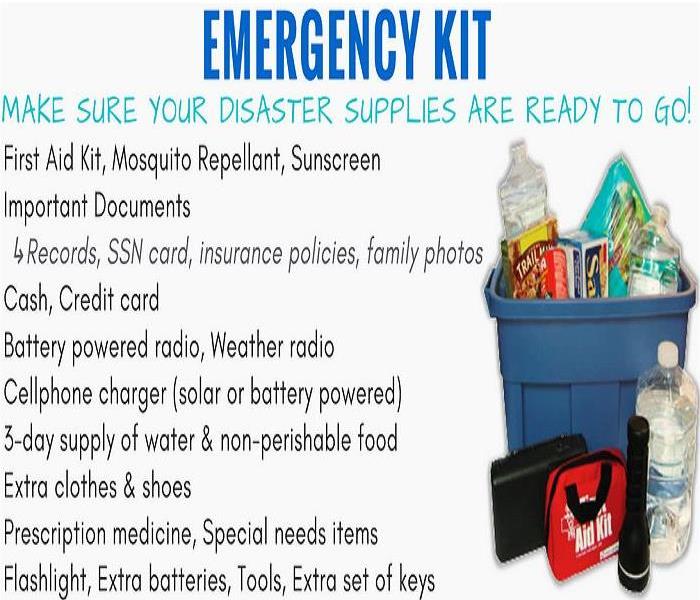 Know that you and your family will have everything they need with a well-stocked emergency storm-ready kit, should a severe storm affect you!
Know that you and your family will have everything they need with a well-stocked emergency storm-ready kit, should a severe storm affect you!
Severe weather can be extremely dangerous. While severe storms typically happen during the warmer months of summer, they can really happen at any time of year in Dutchess County—and for this reason, it is important that you are always as prepared as possible in the event of severe weather.
One of the first things you should do for extreme weather preparedness is to pack an emergency kit for your household and keep it in the area you have designated as your safe space during the storm. That way you can be certain that should severe weather threaten your home, you, your family and pets have everything they need to stay comfortable and safe.
What Should Go Into Your Severe Weather Emergency Kit?
Building an emergency kit is a great way to gain peace of mind about your family’s preparedness and can ensure that you have everything you need in the event of power outages, inability to leave the home, and any other emergency. As a bonus, this can be a great, way to teach all family members the importance of always being prepared.
It is recommended that you store your emergency kit in a rubber tote or one made of another resilient material, in an area that is handy to where you will shelter in the event of a storm. If you need help making an emergency kit checklist, hopefully the items below will point you in the right direction:
- Non-perishable food such as granola bars and canned goods
- Sealed water – one gallon per day, per person plus plenty extra for pets.
- Flashlights and their corresponding batteries
- Utensils, plates and napkins
- An NOAA weather radio (some models are powered by hand, but be sure to include extra batteries if yours requires them)
- First-aid supplies and over-the-counter medications
- Sleeping bags and blankets, pillows
- Food, medication and paperwork for pets in the home
- 2 or more changes of clothes for each person in the household including socks and shoes. Make sure you can easily grab weather-appropriate clothing if needed in a pinch.
- Any prescription medication members of the household require
- Cards, books and other sources of entertainment that do not utilize electricity
- Portable phone charges
- A copy of insurance cards and extra cash
- A map with your local emergency shelter marked on it
- Personal hygiene items such as toothbrushes and deodorant
- Baby wipes, toilet paper and hand sanitizer
- Garbage bags and sealable storage bags
Be sure to check every few months and rotate out anything like medication or food items with an expiration date.
If your home is damaged by a storm, you can count on us to help. Call us today for immediate assistance with the storm damage restoration process!
The Real Dangers of High Winds in Dutchess County, No Matter the Season
9/1/2021 (Permalink)
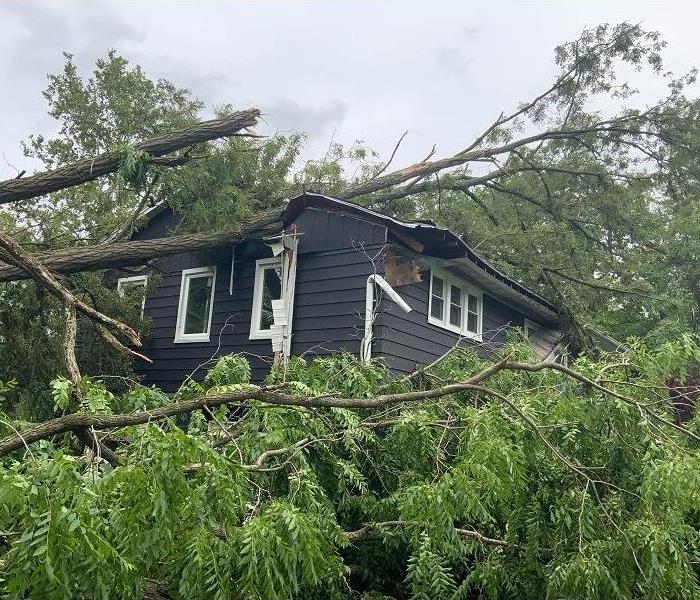 You can count on SERVPRO of Western Dutchess County if your home or business suffers any type of storm damage!
You can count on SERVPRO of Western Dutchess County if your home or business suffers any type of storm damage!
Depending on the season, there are many things that can be dangerous with severe weather events in Dutchess County, which is part of what makes them such a threat.
Any average severe thunderstorm will contain hail, heavy rains, lightning and high winds—any one of which can be extremely frightening and cause serious damage to a home or business. An average snowstorm can cause limbs and trees to fall, gutters to come down, power outages and more.
While there is nothing anyone can do in order to stop severe weather from occurring, we always encourage a preparedness mindset.
Though you can never predict what manner of damage a storm will do, understanding its threats (such as high winds) and knowing how to prepare for them makes all the difference in your overall safety.
High Winds Come with Their Own Dangers
High winds are defined as sustained winds at 40 miles per hour or more, which can be extremely intense. We’ve all seen weather channels showing tornadoes and hurricanes in the south and west but being in person is a very different reality. Here are some of the issues that high winds can present and how you can protect against them:
Objects Becoming Projectiles
Depending on the strength of the wind, nearly any unsecured object outside can become a projectile. Anything from plant containers and garbage cans to patio furniture and outdoor playsets to yard maintenance items and grills can be picked up and moved considerable distances, which also poses a risk for any home or property in the object’s path. Bring any small, loose items indoors before a large storm, and secure any larger outdoor objects with weights or tie downs so they can’t get uprooted.
Downed Trees and Power Lines
Winds can actually blow over trees and power lines if the force is correctly applied, which can be extremely scary. While there is not much you can do regarding power poles on your street, you can trim back any overgrown trees and have any weakened or dead ones removed so they are less of a liability. Have a tree professional do an assessment on the ones growing near your house to see if they require cutting back or are frail and diseased. One of the most common damages we see during storms are trees falling on homes and causing a myriad of problems.
Secure Doors and Windows
Making sure all doors and windows are closed and latched is something that can be easily forgotten, but is so important. Broken glass is extremely hazardous, and if a window or a door is not properly sealed, water damage can become a secondary hazard after the storm passes. Do a thorough inspection of your home after a storm and address any issues promptly. The quicker you have any problems remedied, the better your chances of avoiding secondary damages.
If you have damage to your property from severe weather, you can always count on us. We are here for you 24/7 to take action on your damage claims. Contact us no matter where and when.
What Commercial Property Managers Should Prep For a Storm In The Wappingers and Fishkill Areas
8/31/2021 (Permalink)
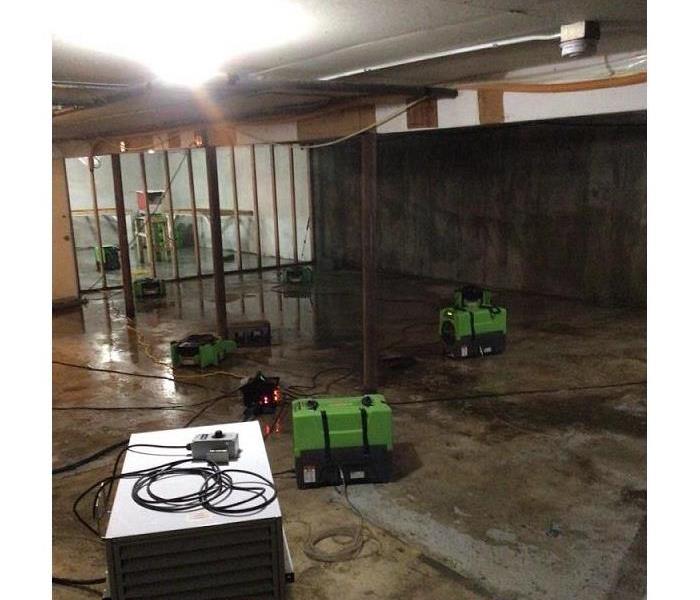 Have a storm plan in place, no matter the season, for your commercial properties!
Have a storm plan in place, no matter the season, for your commercial properties!
Storms are accountable for countless injuries across the country each year. If any of those occur, your company could be facing liability if any injuries happen on your property and substantial costs to remedy avoidable damage. Where do you even begin for storm prep in Dutchess County?
Use these helpful tips to get a handle on this important part of planning:
Make A Storm Plan
Every multi-building or multi-unit needs an inclusive storm preparation plan and should cover things like
Create your plan several months in advance for both summer and winter as part of storm preparedness. Remember to include seasonally-affected specifics like blizzards and heat sources or hurricanes and sheltering-in-place plans. Review, seek input and revise it with your staff. Make sure you distribute it to residents, tenants and other facilities staff. Make the plan a saved document that can be found and shared online if needed.
Check with the properties insurance and make sure you’re clear on what has to be done in case of damage, who to report it to and what SERVPRO franchise you can call.
Always secure loose objects around the property
A powerful storm can make furniture and even garbage cans dangerous projectiles that can cause harm and damage. Inspect for anything that could be picked up by strong winds. Remove portable items to indoor storage. For stationary items like playground equipment, use tarps, ties, locks and similar securing devices to keep things in place. Trees and bushes should be trimmed regularly to prevent them from causing damage but certainly before a pending storm.
Supply stock
In the midst of a storm, important supplies can run out. Prepare by stocking up on essentials months before the storm season. Keep lots of water and batteries on hand, candles, matches, a first-aid kit, a battery-powered radio and non-perishable foods if possible. It’s also a good idea to invest in a backup generator or several and the fuel they need to run.
We’ve all seen photos and news stories about how storms can be so dangerous, sometimes deadly. Being prepared can be a lifesaver. Having a solid storm plan, being informed, securing loose items and keeping important supplies on hand can help keep your residents and property safe and overall, will help things go smoother.
In the event your property suffers storm damage, SERVPRO of Western Dutchess County is here to help. Our teams are available for emergencies 24/7 and can help make it “Like it never even happened.”
A Guide to Being Storm-Safe at Home in Dutchess County
6/17/2021 (Permalink)
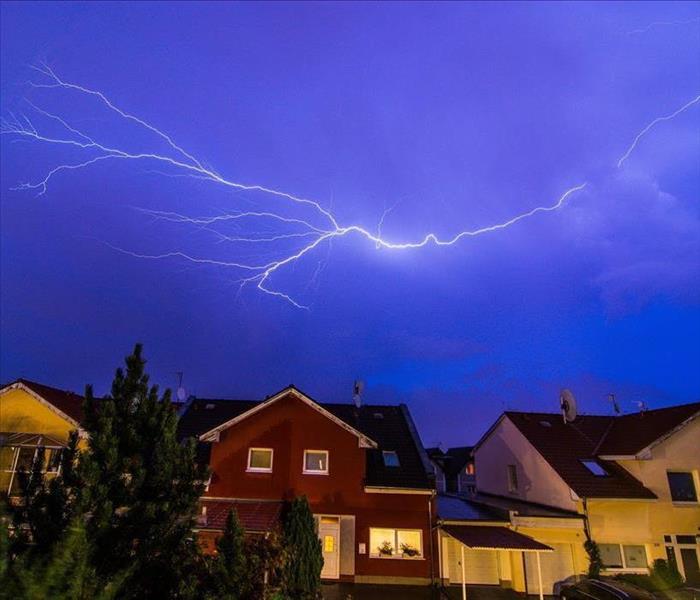 Don't underestimate the power of thunderstorms! Make plans and be prepared!
Don't underestimate the power of thunderstorms! Make plans and be prepared!
Thunderstorms are a common part of life in Dutchess County, but they can also be dangerous or deadly—just because they happen frequently does not mean they should not be taken seriously every time.
Severe thunderstorms can produce high winds, heavy rains, hail and lightning if conditions are right, all of which can be harmful to you and your home. Roof and exterior damage from trees, lightning strikes that can start fires, electrical malfunctions, flooding and water damage all have the potential to occur during or due to a storm. Thankfully, through practicing storm safety, you can circumvent many of the issues that could arise due to storms.
Storm Safety for Every Element of Your Home
*Storm safety for the outside of your home-
Storms can lead to serious household damage that can be a big hassle to deal with. To help prevent this damage from occurring, you can take several steps:
- Inspect your roof regularly for missing or loose
- Clean out your gutters at least twice per Interior water damage often occurs when clogged gutters can’t handle the amount of rain a storm can bring.
- Bring in or secure patio furniture, potted plants, toys, lighting features and any other objects that could become projectiles in high
- Consider installing a lightning protection system for your home.
- Trim trees near your home regularly to reduce the chances of dead limbs falling.
*Storm safety inside your home-
If severe weather is on the way, the best thing you can do is stay put and stay safe at home—and having a plan in place can help you make that happen:
- Keep a weather radio, flashlights and batteries, a cell phone charges and bottled water handy as part of your emergency preparedness kit.
- Designate a safe area of your home for your family to shelter from the storm—it should be an interior room without any
- Use surge protectors on every outlet in case of lightning
*Storm safety when you are away from home-
If you will be going out of town, it is important to make sure your home is still protected from a storm that might come through while you are away.
- Unplug all appliances and electronics in case of lightning
- Secure outdoor furniture and possible projectile objects before you go away just in case. We usually recommend storing everything inside if you’re going to be away for a while.
- Be sure a trusted neighbor knows you are going out of town so they can contact you if any issues Provide a list of emergency service providers, including SERVPRO of Western Dutchess County, so they know who to call no matter the issue.
If your home sustains storm damage, from roof tarping, window boarding and water damage of any kind, you can count on us to help. Contact us today and our emergency response team will take it from there. Making property damage "Like it never even happened." locally, since 1992.
Severe Storms Can Bring on Damaging Winds, Protect Your Wappingers Home!
2/3/2021 (Permalink)
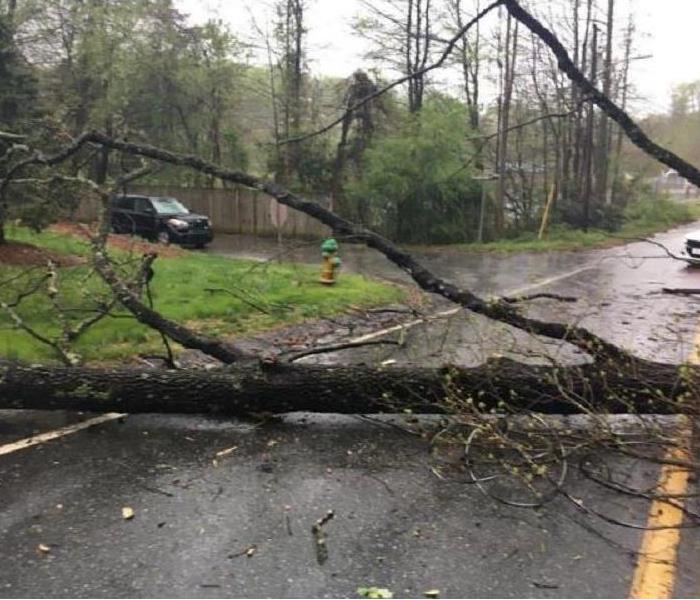 Make sure your home is protected from potentially damaging winds!
Make sure your home is protected from potentially damaging winds!
Do you know how to protect your property from damaging winds?
There are many concerns that come with severe storms, not just the heavy rain or snow, but potentially damaging winds are always a threat to keep in mind. These winds, which can come with little to no notice, can be devastating and cause long-term structural impacts.
-When Wind Becomes Damaging
While many consider damaging winds to come from a tornado or hurricane, those are not the only times when they may come into play. Traditionally, damaging winds are considered those with wind speeds exceeding 50–60 mph. They can stem from a strong thunderstorm and are called “straight-line” winds, which cause damage much like tornadoes and, yet, the damage is different.
These winds can also cause loose objects on your property to become projectiles. Cars parked outside, windows and the roof are especially vulnerable and can take the brunt of this damage, and if the damage is extensive, water damage can happen inside your home as well.
-Protecting Your Property from Damaging Winds
There are a number of ways you can protect your property from damaging winds, but keep the “Two R’s” in mind: reinforce and remove. A few of these are listed below:
- Have a professional reinforce your garage door.
- Remove and/or anchor loose objects on your property, such as trash cans, grills, outdoor furniture, and toys that could be moved or tossed by the wind.
- Hire a professional to remove or trim back large or dying trees and branches that could fall over onto your home.
- Have your gutters cleaned professionally once a year, especially if there are trees growing near them. Leaf collection or heavy snow can cause water intrusion if the gutters can’t drain properly.
Not all high wind circumstances come with advanced warning, but some of these action items could be the difference between damage and little-to-no damage.
Also, when building a new home or renovating an older home, be sure the windows, walls and doors are up to code for the weather in your area.
Should your home ever be hit by damaging winds and resulting water damage, our highly trained specialists at SERVPRO® of Western Dutchess County are here to help with the cleanup and restoration of your home 24/7. Call us at 845-831-3600.
How Property Managers Should Prep for a Storm in the Fishkill, Wappingers, Hopewell and Poughkeepsie Areas
1/23/2021 (Permalink)
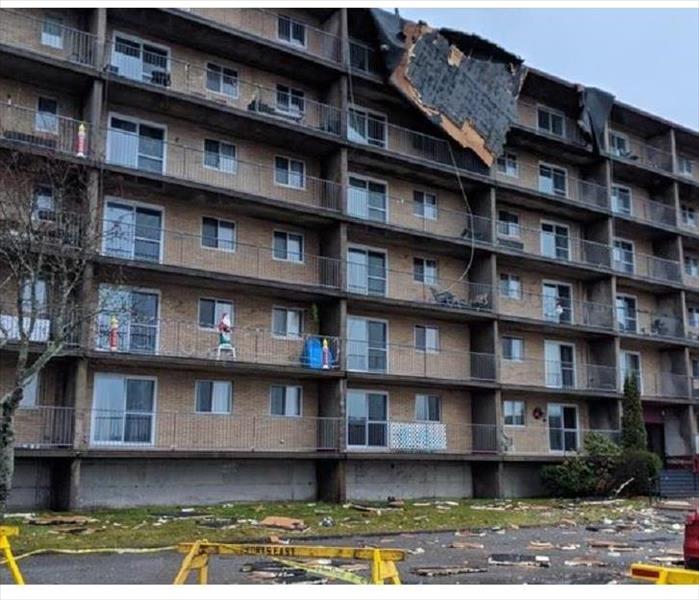 Make sure your apartment building or complex is prepped and ready for a storm in any season!
Make sure your apartment building or complex is prepped and ready for a storm in any season!
Storms are liable for countless injuries across the country each year throughout the Hudson Valley. If any of those occur on a property you or your company manages, you could be facing liability if any injuries occur and substantial costs to remedy avoidable damage. Where do you even start to storm prep in the Dutchess County market?
We’ve rounded up these handy tips to get a jump on planning for severe weather at your property:
Make A Storm Plan
Every single or multi-building property or multi-unit property needs an inclusive storm preparation plan and should cover things like:
Create your plan several months in advance as part of storm preparedness for both summer and winter occurrences. Review, get input and tweak it with your staff and colleagues, then make sure you distribute it to residents, tenants and other facilities staff. It’s wise to get feedback from residents as well, as they’re the ones who would be affected.
Always secure loose objects around the property
A powerful storm can make furniture and even garbage cans dangerous projectiles that can cause harm and damage. Inspect for anything that could be picked up by strong winds. Remove portable items to indoor storage. For stationary items like playground equipment, use tarps, ties, locks and similar securing devices to keep things in place. Trees and bushes should be trimmed regularly to prevent them from causing damage but certainly before a pending storm. Contact your landscaping company or property maintenance company so they’re prepared ahead of time as well and you won’t have to worry about when they’ll be showing up.
Supply stock
During a storm, important supplies can run out. Prepare by stocking up on essentials months before the storm season. Keep lots of water and batteries on hand, candles, matches, a first-aid kit, a battery-powered radio and non-perishable foods if possible. Don’t forget about portable phone charges or wireless chargers. It’s also a good idea to invest in a backup generator or several and the fuel they need to run. If any of your buildings have a basement or crawl space with a sump pump, be sure the back-up generator can power it promptly. Flooding becomes a major issue in storms and sump pumps are vital to keep functioning properly.
Be Clear on the Insurance Coverage, Liability and Limitations
While the policy isn’t your personal one, it’s important to be aware beforehand what the details and specifics are. As a property manager, there are people and structures, trees and safety issues that could be affected in many ways during a storm. Consult with the insurance broker as to what you should be in the know about consistently, who is responsible for what and the areas the policy pertains to, any riders or addendums that need to be revisited and that the coverage itself is more than enough.
We’ve all seen photos and news stories about how storms can be so dangerous, sometimes deadly. Being prepared can be a lifesaver. Having a storm plan, securing loose items, keeping important supplies on hand and staying abreast of insurance coverage can help keep your residents and property stay safe and overall, will help things go smoother.
In the event your property suffers storm damage, SERVPRO of Western Dutchess County is here to help. Our teams are available for emergencies 24/7 and will help make it “Like it never even happened.”
Being Safe During Various Storm Conditions | SERVPRO® of Western Dutchess County
11/2/2020 (Permalink)
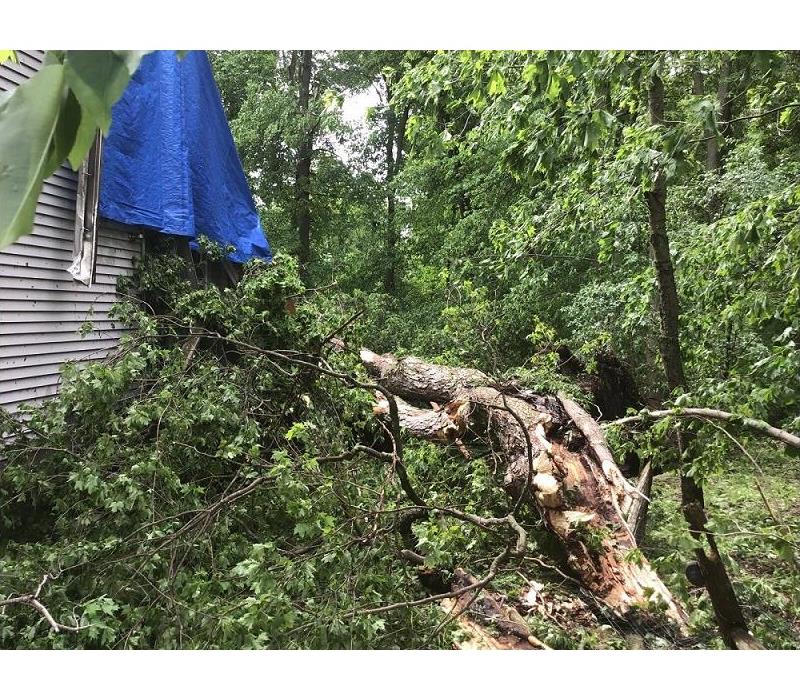 You're in good hands with SERVPRO of Western Dutchess County's storm damage response team!
You're in good hands with SERVPRO of Western Dutchess County's storm damage response team!
In the Hudson Valley, we're "lucky" enough to experience storms of all sorts. From blizzards to straight line winds, storm safety is such an important thing to focus on in order to keep your household safe. Storms can come about suddenly, cause extensive damage and leave just as rapidly—but for those who are prepared, it's a bit easier to recover.
Because the weather can be unpredictable, it is wise to have a plan for various storm conditions so you can stay safe no matter where you are. Whether you are away from home, at home or need to evacuate, it is important your family knows what to do.
If You Are Caught in a Storm Away From Home
Storms never occur at convenient times, and if you are out and about, it is important to know what to do. If you are driving, your car is actually a safe place to seek shelter. Pull off of the road, turn off the ignition and avoid touching anything metal inside for the duration of the storm. If you are not near your vehicle, try to find a covered shelter or building and avoid being near tall trees or power lines.
If You Are Caught in a Storm At Home
Your home is the best place to be if a storm is moving through, so if one starts up, stay put. Move all household members, including pets, to your designated sheltering area that is free from exterior windows or doors, such as a bathroom or hallway, and tune into local weather updates so you can stay alert.
If You Have to Evacuate Due to a Storm
Evacuation can be a frightening thing, but if you have prepared for it, it can be less scary. Make sure you are aware of the local evacuation routes away from your household and that each family member has a “go bag” of emergency supplies packed and ready. Be sure to stay alert to which shelters in your area are open and which accept families with pets, if relevant.
If your home has sustained any kind of damage due to a storm, we are here to help. You can get in touch with us anytime and we will respond right away. Contact us 24/7, we're ready to help!
How Dangerous High Winds Can Be During a Severe Storm | SERVPRO® of Western Dutchess County
9/8/2020 (Permalink)
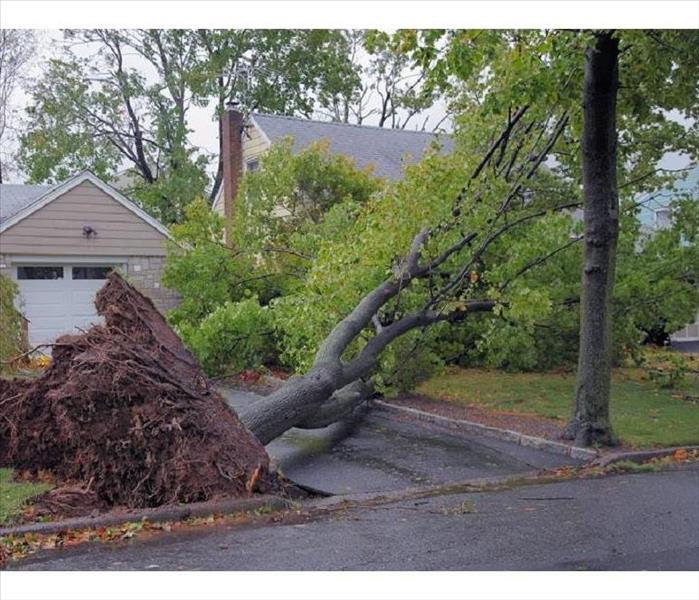 Preparing your home before a storm is a great way to help avoid damages to your property or someone else's!
Preparing your home before a storm is a great way to help avoid damages to your property or someone else's!
There are many things that can be dangerous regarding severe weather events in Dutchess County, which is part of what makes them such a threat.
Any average severe thunderstorm will contain hail, heavy rains, lightning and high winds—any one of which can be extremely frightening and cause serious damage to a home or business.
While there is nothing anyone can do in order to stop severe weather from occurring, we have always encouraged a preparedness mindset.
Though you can never predict what manner of damage a storm will do, understanding its threats (such as high winds) and knowing how to prepare for them makes all the difference in your overall safety.
The Dangers of High Winds During Severe Weather-
High winds are defined as sustained winds at 40 miles per hour or more, which can be extremely intense. Here are some of the issues that high winds can present and how you can protect against them:
Objects Becoming Projectiles
Depending on the strength of the wind, nearly any unsecured object outside can become a projectile. Anything from plant containers to patio furniture to grills can be picked up and moved considerable distances, which also poses a risk for any home or property in the object’s path. Bring any small, loose items indoors before a large storm, and secure any larger outdoor objects with weights or tie downs so they do not get picked up.
Downed Trees and Power Lines
Winds can actually blow over trees and power lines if the force is correctly applied, which can be extremely scary. While there is not much you can do regarding power poles on your street, you can trim back any overgrown trees and have any weakened or dead ones removed so they are less of a liability.
Secure Doors and Windows
Making sure all doors and windows are closed and latched is something that can be easily forgotten, but is so important. Broken glass is extremely hazardous, and if a window or a door is not properly sealed, water damage can become a secondary hazard after the storm passes.
If you have damage to your property from severe weather, you can always count on us. We are here for you 24/7 to take action on your damage claims. Contact us no matter where and when.
A Guide to Being Storm-Safe at Your Beacon Home
9/8/2020 (Permalink)
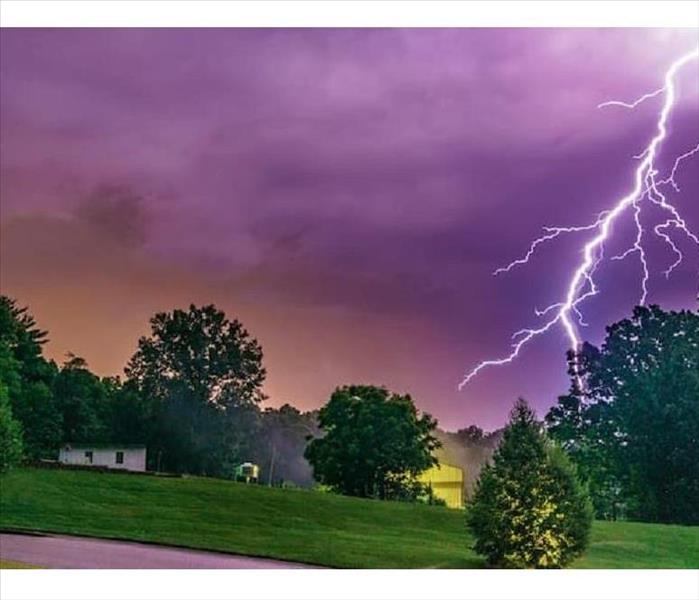 You can never be too prepared for a severe thunderstorm, be storm ready to help protect your family and home!
You can never be too prepared for a severe thunderstorm, be storm ready to help protect your family and home!
Thunderstorms are a common part of life, but they can also be dangerous or deadly—which means that just because they happen frequently does not mean they should not be taken seriously every time.
Severe thunderstorms can produce high winds, heavy rains, hail and lightning if conditions are right, all of which can be harmful to you and your home. Thankfully, through practicing storm safety, you can circumvent many of the issues that could arise due to storms.
Storm Safety for Every Element of Your Home in Dutchess County
-For the outside of your home-
Storms can lead to serious household damage that can be a potential headache to deal with. To prevent this damage from occurring, you can take several steps:
- Inspect your roof regularly for missing or loose shingles.
- Clean out your gutters at least twice per year.
- Bring in or secure patio furniture, potted plants and any other objects that could become projectiles in high winds. This includes pool furniture, outside toys, trampolines, pet supplies and garbage cans. How often do we see garbage cans sliding down the street in the wind? All the time.
- Consider installing a lightning protection system for your home.
- Trim trees near your home regularly to reduce the chances of dead limbs falling on your home. If you notice any near power lines, notify your electric provider immediately so they can deal with them quickly. Don’t try to trim any branches near power lines or transformers.
-Storm safety inside your home-
If severe weather is on the way, the best thing you can do is stay put and stay safe at home—and having a plan in place can help you make that happen:
- Keep a weather radio, flashlights and batteries handy as part of your emergency preparedness kit. Spare car chargers or cell phone battery chargers are a great asset in your emergency kit too.
- Designate a safe area of your home for your family to shelter from the storm—it should be an interior room without any windows. Make sure all family members know the plan and that your pets can be with you indoors as well.
- Use surge protectors on every outlet in case of lightning strikes.
-Storm safety when you are away from home-
If you will be going out of town, it is important to make sure your home is still protected from a storm that might come through while you are away.
- Unplug all appliances and electronics in case of lightning strikes.
- Secure all outdoor furniture and possible projectile objects before you go away just in case.
- Be sure a trusted neighbor or family member knows you are going out of town so they can contact you if any issues arise.
If your home sustains storm damage, we’re here to help 24/7. Contact us today for more information about how we can help get you back to preloss condition quickly and effectively.
A Guide to Being Storm-Safe at Home | SERVPRO® of Western Dutchess County
6/26/2020 (Permalink)
 Taking precautions against storms throughout the year can really help when the bad ones hit!
Taking precautions against storms throughout the year can really help when the bad ones hit!
Thunderstorms are a common part of life in Dutchess County, but they can also be dangerous or deadly—which means that just because they happen frequently does not mean they should not be taken seriously every time.
Severe thunderstorms can produce high winds, heavy rains, hail and lightning if conditions are right, all of which can be harmful to you and your home. Thankfully, through practicing storm safety, you can circumvent many of the issues that could arise due to storms.
Storm Safety for Every Element of Your Home Storm
-Safety for the outside of your home:
Storms can lead to serious household damage that can be a headache to deal with. To prevent this damage from occurring, you can take several steps:
-Inspect your roof regularly for missing or loose shingles.
-Clean out your gutters at least twice per year.
-Bring in or secure patio furniture, potted plants and any other objects that could become projectiles in high winds.
-Consider installing a lightning protection system for your home.
-Trim trees near your home regularly to reduce the chances of dead limbs falling on your home.
-Storm safety inside your home:
If severe weather is on the way, the best thing you can do is stay put and stay safe at home—and having a plan in place can help you make that happen:
-Keep a weather radio, flashlights and batteries handy as part of your emergency preparedness kit.
-Designate a safe area of your home for your family to shelter from the storm—it should be an interior room without any windows.
-Use surge protectors on every outlet in case of lightning strikes.
-Storm safety when you are away from home:
If you will be going out of town, it is important to make sure your home is still protected from a storm that might come through while you are away.
-Unplug all appliances and electronics in case of lightning strikes.
-Secure all outdoor furniture and possible projectile objects before you go away just in case.
-Be sure a trusted neighbor knows you are going out of town so they can contact you if any issues arise.
If your home sustains storm damage, you can count on us to help. Contact us today for more information about how we can help 24/7.
When Storm Damage Threatens Your Home, We’re Here to Help | SERVPRO® of Western Dutchess County
2/7/2020 (Permalink)
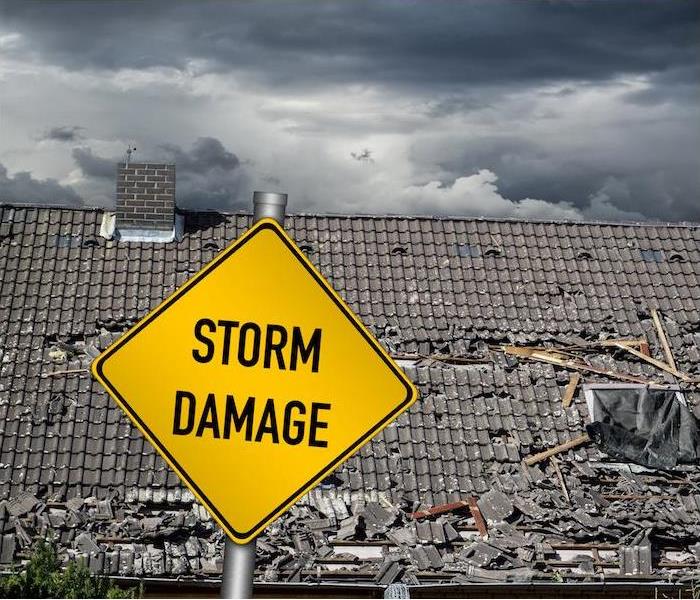 SERVPRO of Western Dutchess County is your Damage Restoration expert. If you experience any storm damage call us right away.
SERVPRO of Western Dutchess County is your Damage Restoration expert. If you experience any storm damage call us right away.
Storms happen quite frequently during the warmer months in Dutchess County, and with how common they are, it might feel easy to forget how destructive they can be in the winter months. In 2018, $2 billion in household damages was attributed to storms, making them the top reason for insurance claim filings.
A storm could cause damage at any point, so preparing for restoration is the best protection strategy. By choosing a restoration company to work with in advance, you can be prepared to make the call as soon as damage is discovered to prevent it from getting worse.
How We Handle Your Storm Damage Restoration-By Starting With a Custom Restoration Plan
Because every incident of storm damage is inherently different, we approach every situation prepared to create a custom restoration plan. Storms can cause issues with moisture, structural damage and mold, so we make sure that we are prepared to handle whatever damage Mother Nature has brought your way.
-By Training Our Technicians Well
Technicians who are knowledgeable in their field are the key to our high-quality work, which is why we invest heavily in our training programs. We begin with training materials from the Institute of Inspection Cleaning and Restoration Certification and provide many other training opportunities throughout our technicians’ careers to make sure they stay up-to-date on the latest restoration techniques and technology.
-By Having Enough Resources
As a locally owned business with a national brand affiliation, we are able to provide however many resources are required after widespread storm damage occurs. We can call in SERVPRO® technicians and equipment from nearby locations that are not impacted in order to make sure everyone in the community receives quick and quality service.
-By Living Up to Our Reputation
We have been in the restoration business for years and are considered leaders in the industry. Because there are so many scams that pop up after severe storms impact an area, choosing a reputable company to work with is vital to make sure you are not getting scammed during the restoration process.
If you have experienced storm damage or want to learn more, you can call us 24⁄7 for more details.
SERVPRO of Western Dutchess County is your GO-TO for any type of winter storm damage!
1/23/2020 (Permalink)
 SERVPRO of Western Dutchess County will handle ALL aspects of storm damage to your home or business.
SERVPRO of Western Dutchess County will handle ALL aspects of storm damage to your home or business.
Even when you feel like you’re super prepared, mother nature can still do a number on your home in Wappingers when a storm hits just right. If you find yourself dealing with storm damage like structural issues, fire or water damage, taking immediate action is essential. Choose the company with storm damage experience, resources and equipment to handle the job on all levels. SERVPRO of Western Dutchess County can respond immediately to storm damage and flooding conditions.
Why Call Us?
*24/7 Emergency Services-there is ALWAYS a live person who will answer your call, no matter the day or time. Our crews are available for your emergency at any time, no matter the time or the holiday.
*We're Faster to Any Size Disaster: We’ve been a local company for over 25 years. When you need help right away when a storm hits your Wappingers, Fishkill, Poughkeepsie or Beacon home or business, our fast response will help prevent secondary damage and therefore reduce restoration costs.
*We Have Specially-Trained Storm Damage Specialists: Being leaders in the water, fire and storm damage industry, our teams have advanced training and years of expertise, not to mention a tremendous amount of hands-on experience. Our professionals will respond quickly, start the remediation process and restore your home to pre-storm condition. From smoke removal to drying out to complete reconstruction, there is nothing we can’t handle!
*We're the LOCAL Trusted Leader in the Water Restoration Industry: Our local 25+ years in the damage restoration industry have proven our trust-worthiness and reliability. Our power lies in being locally owned with National Storm Resources. No damage is too big, or too small.
*We Have the Resources to Handle Storms and Disasters: In addition to our own resources, we have the capability to access equipment and personnel from over 1,700 Franchises across the state and country. We can even call upon strategically located Disaster Recovery Teams for catastrophic storms and major events. Not all damage restoration companies are created equal!
SERVPRO of Western Dutchess County, the local restoration leader for over 25 years and always here to help. Call us anytime at (845) 831-3600, we’ll make it “Like it never even happened.”
Winter weather Prep tips For Your Wappingers Home
11/6/2019 (Permalink)
 Follow some easy tips to get your Wappingers home Winter Ready!
Follow some easy tips to get your Wappingers home Winter Ready!
While the Hudson Valley is used to unpredictable winters, it’s incredibly advantageous to prepare your home ahead of time should we get hit by significant snowfalls or days of super freezing temperatures. These weather extremes can lead to water damage, roof damage, broken pipes & ice damming.
SERVPRO of Western Dutchess County wants to make sure you are prepared and know what to do in case you do have a damage!
Tips for Preparing your Home for Winter Weather:
- When temps dip below 20 degrees, or the “temperature alert threshold,” keep cabinet and closet doors open to allow heat to circulate in. Especially true in attics, basements and garages. If possible, purchase some pipe insulation material from a hardware store. It’s inexpensive and easy to do.
- Keep a slow trickle of water flowing through faucets, especially if the pipes for faucets run through unheated or uninsulated areas of the home.
- Shut off outdoor faucets. Find the shutoff valve in the basement or crawl space and turn it to "off". After turning off the water, open the outdoor faucet to help ensure it drains completely and the inner valve is shutoff.
- Ensure gutters are clean and secure. Leaves and debris accumulate, causing a damming effect on gutters, which could lead to roof problems and water damage.
- Proper maintenance of your furnace can help reduce the risk of puffbacks. Additionally, have your hot water heater inspected as they also can leak if not properly maintained.
- Have your roof and attic inspected for any leaks or damage. Unknown leaks can cause secondary damage like mold and structural issues. Definitely not something you want to deal with in the winter months.
If your Dutchess County home experiences any kind of water damage, broken pipes or ice damming, count on the experts at SERVPRO of Western Dutchess County to take care of it effectively and efficiently. We’re here to help 24/7 at 845-831-3600. We'll make it "Like it never even happened."
Making a Flood Escape Plan That Includes Your Pets | SERVPRO® of Western Dutchess County
9/9/2019 (Permalink)
 Pet parents: find out in advance where the pet-friendly hotels and shelters are in case of an emergency!
Pet parents: find out in advance where the pet-friendly hotels and shelters are in case of an emergency!
When making household emergency plans, it is common to create one plan for the entire family since many people will have the same needs. However, it is important to remember family members’ individual needs as well, especially when it comes to pets.
Including household pets in your flood emergency plan is not that much different than making one for any other member of the household. By making sure their documents are safe, their emergency kit is stocked and you have a moment-of evacuation plan in place, you can keep the whole family together and safe in the event of a flood.
Prepare Your Pets Before a Flood-
When making your own flood preparedness plan, be sure to remember these pet-specific items as well:
- Be aware of differences between a flood watch and flood warning to understand weather reports.
- Use the FEMA Flood Map Service Center to assess your overall risk.
- As you get your own important documents together to store in a waterproof location, obtain copies of your pet’s vaccine records and microchip information to include as well.
- Find a designated location to take your pets if you must evacuate, such as a pet-friendly shelter or hotel.
- Coordinate with other pet-owning neighbors to develop a plan for if one of you is away from home when a flood strikes. Show them where your pet emergency supplies are and designate a meeting spot.
Making Your Pets’ Emergency Kit-
An emergency kit for your pets contains many of the same things as one would for a human, with some special considerations:
- A picture and detailed description of your pets
- Proof of ownership
- Vaccination records
- An extra leash and collar
- Bowls for food and water
- Required medications
- Enough sealed food, water and treats needed to last several days
- A pet first-aid kit
- An identical replica of a favorite toy to bring them entertainment and comfort
Surviving a Flood With Your Pets-
The most important thing to do when a flood becomes imminent is to tune in to local weather channels and emergency stations to stay aware of authorities’ instructions. Here are some other tips for surviving a flood with your pets:
- Bring any outdoor pets inside and head to the highest area of your house.
- If authorities are advising to evacuate, do so and bring your pets, as animals are required to be included in state and local emergency plans.
- Keep your and your pets’ emergency kits handy so they can easily be taken with you.
The time period after a flood can be traumatizing, but SERVPRO of Western Dutchess County is here to help restore your home to pre-flood condition fast. Get in touch with us today to learn how we approach water restoration differently and can help you after an emergency.
Is your Western Dutchess County business prepared for a disaster?
9/3/2019 (Permalink)
 Disasters can strike with little warning, make sure your business is prepared for emergencies!
Disasters can strike with little warning, make sure your business is prepared for emergencies!
September is National Preparedness Month, an annual awareness event sponsored by the Federal Emergency Management Agency (FEMA) to help everyone get a leg up on preparing themselves, families and businesses in the event of a disaster.
This is a great time for business and commercial property owners to review their emergency plans. Historically, tropical storms from hurricanes have caused significant property damage homes and businesses in the months of September and October. Flooding, roof leaks, broken windows, electrical fires, and downed trees are possible damages from hurricanes.
Commercial restoration presents unique challenges in and of itself. Building structure, employees, clients or customers, inventory, files, documents, and other crucial elements can be affected. It’s vital to have a comprehensive emergency plan that contains critical information about the location of shut-off valves, fire suppression system controls, and emergency contact numbers in addition to emergency escape plans and other disaster information. Having this all at your fingertips either in mobile form on your phone or in a full document format can save emergency responders precious time and help contain damage and minimize injury.
Because SERVPRO knows the time to create a disaster readiness plan is before you need it, they have developed the SERVPRO Emergency READY Program (ERP) for any business owner to have at their facility, at no charge. It’s a simple process involving one of our team members and the business working together to gather information that will be critical to have if a disaster strikes. Once the ERP is created, business owners have access to their information 24/7 online and by using SERVPRO’s free mobile app. If needed, we’re happy to provide a full hard-copy for your employees as well.
In short time, you can help to protect your business or commercial property from storm damage by having a plan in place and by calling SERVPRO of Western Dutchess County. We’re here to help 24/7, no matter where and when. Call us asap to schedule your ERP at 845-831-3600.
Thunderstorms can cause serious damage in Western Dutchess County
7/10/2019 (Permalink)
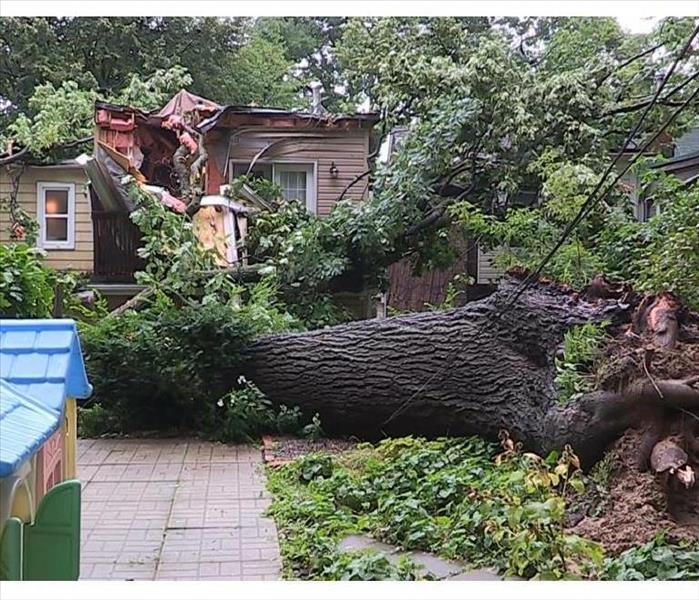 Don't underestimate the power of a thunderstorm!
Don't underestimate the power of a thunderstorm!
Thunderstorms are pretty common during the summer months in the Hudson Valley. However, with these storms comes a chance for storm damage caused by those severe thunderstorms.
A little Thunderstorm 101 from SERVPRO of Western Dutchess County-
In the U.S., there are generally around 100,000 thunderstorms per year, and 10% of those that are considered severe. Compared to hurricanes and winter storms, thunderstorms affect relatively smaller areas.
Every thunderstorm needs 3 ingredients:
*Moisture- to form clouds and rain
*Unstable Air- warm air that can rise rapidly
*Lifts- fronts, sea breezes, and mountains can lift air to form thunderstorms
(This is why you often hear meteorologists’ reference when cold and warm fronts are about to intersect, creating dangerous conditions).
Damage from Thunderstorms
Thunderstorms can create many different dangerous situations that can occur during it, but debris flying around due to high winds is among the most dangerous to both property and humans.
Wind speeds can gust in a severe thunderstorm up to and over 57.5 mph. That is enough to cause damage to your property. If you have anything in your yard that’s not secured, including things like bikes or trash cans, those items can become projectiles quickly, causing damage to homes, businesses and cause personal injuries.
Thunderstorms can also produce the following damage besides wind damage:
Lightning damage. When lightning strikes a building, electricity moves through the wiring of the home. This can lead to appliances blowing out, along with an increased risk of fire.
Tornado damage. Consider this—the average storm has winds around 60 mph. The wind in a tornado can gust upward of 200 mph, which can wreak some serious havoc.
Hail damage. Did you know that according to NOAA, the cost of hail damage can reach $1 billion a year?
Flood damage. During storms, a lot of rain often falls in a small amount of time. This can make it impossible for the water to soak into the earth, leaving pools of water everywhere. This flash flooding can have dangerous consequences.
Dealing with storm damage to your home or business? Know that the team at SERVPRO® of Western Dutchess Countyis available 24/7 for emergencies to help with cleanup and restoration.
Be familiar with storm terms and what to do at your Western Dutchess County home!
5/29/2019 (Permalink)
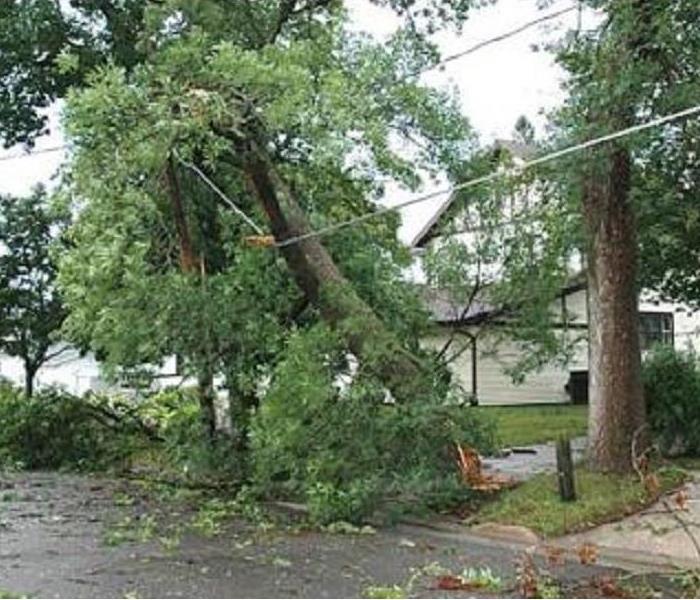 When lightning strikes, SERVPRO of Western Dutchess County strikes back!
When lightning strikes, SERVPRO of Western Dutchess County strikes back!
The Hudson Valley has seen our fair share of severe storms these past few years that have had the potential to cause damage to homes and impact daily life. It’s important to understand the terminology, do some early prep and have a plan for your family.
-Make sure you have a communication plan and emergency kit ready to go. Discuss this with your family often.
-Get rid of rotting or dead branches or limbs that could pose a hazard in high winds.
-Tie down or bring inside any loose items or furniture
-Stay inside a car (not a convertible with a soft top), a home or building until the threat is over.
According to the National Severe Storms Laboratory, here are the differences between a ‘watch’ and a ‘warning.’
*A Severe Thunderstorm WATCH is issued by the NOAA Storm Prediction Center meteorologists who are watching the weather 24/7 across the entire U.S. for weather conditions that are favorable for severe thunderstorms. A watch can cover parts of a state or several states. Watch and prepare for severe weather and stay tuned to NOAA Weather Radio to know when warnings are issued.
*A Severe Thunderstorm WARNING is issued by your local NOAA National Weather Service Forecast Office meteorologists who watch a designated area 24/7 for severe weather that has been reported by spotters or indicated by radar. Warnings mean there is a serious threat to life and property to those in the path of the storm. ACT now to find safe shelter! A warning can cover parts of counties or several counties in the path of danger.
Having a plan for severe storms is important. Plan on SERVPRO of Western Dutchess County to get your Poughkeepsie, Wappingers, Fishkill or Beacon property back to preloss condition no matter the size, and no matter the time, we’ll make it “Like it never even happened.”
Protecting Your Property From Flash Floods | SERVPRO® of Western Dutchess County
5/15/2019 (Permalink)
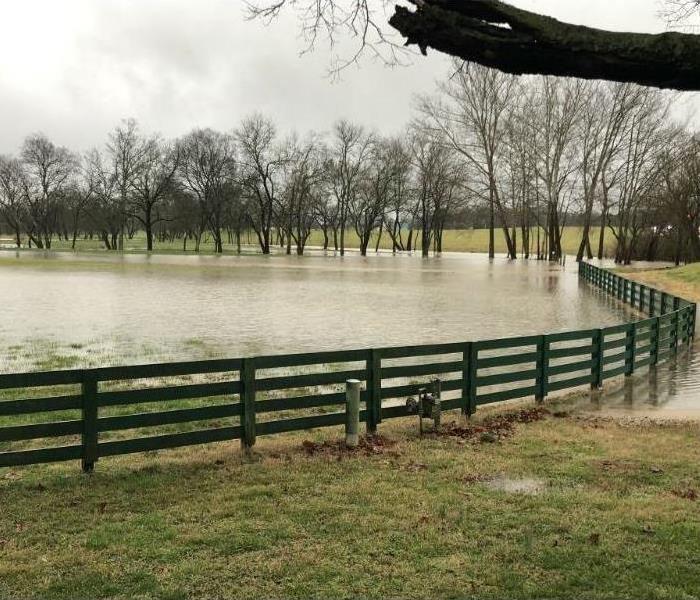 No matter where you live or work in Western Dutchess County, it's important to know about flash floods.
No matter where you live or work in Western Dutchess County, it's important to know about flash floods.
Whether you live in an area that’s a known flood zone or not, it’s important to be prepared for flash flooding at your Western Dutchess County home or business. As the name implies, flash flooding can come up suddenly and affect even areas that aren’t typically prone to rising waters. Here’s what you need to know:
~What Causes Flash Floods?
There are several different factors that can contribute to a flash flood developing. Prolonged rainfall or quick, intense rainfall can put areas at risk. Dam or levee failure, as well as a sudden release of water held by a debris jam can all cause flash flooding.
Most flash flooding is caused by thunderstorms that remain isolated over an area or repeatedly develop over the same place, or heavy rain from tropical storms. Additionally, ice melting in the spring can have a trickle-down effect and lead to flash flooding farther down the water stream.
~Flood Watch vs. Flood Warning
Here is a breakdown of flash flood terminology so you can be alert:
* Flash Flood Watch: Be alert within the designated watch area, flooding is possible.
* Flash Flood Warning: Flooding has been reported or is imminent, get to higher ground.
* Urban/Small Stream Advisory: Low-lying streets, small streams and areas are experiencing flooding.
~How to Stop Flash Floods From Damaging Your Property
While flash flooding cannot be prevented or deterred, there are ways you can prepare your property to lessen the damage if you’re at risk:
*Raise your essential equipment- Have a professional lift your water heater, air conditioner, furnace and other equipment off the ground if your home is in a known flood zone.
*Stockpile materials- In some cases, you may be able to divert flood waters and discourage landslides with sandbags, so keep some on hand. Also keep plywood and nails on hand to board up your home in the event of damage.
*Shut off utilities- If a flood is imminent, shut off electricity to your house. This will keep essential components from shorting out and causing more damage.
*Know your evacuation route- The most important thing to keep safe in a flood is your family. Draft an evacuation plan and make sure your family is aware of it. Review the plan often and adjust if needed.
If you’ve suffered from water damage from a flash flood, SERVPRO® of Western Dutchess County can help. Our dedicated team is here for you, no matter when. Contact our 24/7 Emergency Line today at (845)831-3600.
Prepping for Severe Weather | SERVPRO® of Western Dutchess County
1/25/2019 (Permalink)
 Help your family be prepared for unwarned severe weather!
Help your family be prepared for unwarned severe weather!
While we may have advanced warning for some types of severe weather, there will be times when we will be taken by surprise.
Fortunately, there are steps you can take and safety tips to follow that will ensure your family is prepared for the unwarned severe weather occurrences.
Why You Should Plan for Severe WeatherOne of the best ways to prepare your family for these situations is to have an established family emergency plan prepared.
If your family does have an emergency plan in place, it is important to have drills to practice that plan and review it as the weather seasons change throughout the year so everyone knows exactly what to do.
If you’ve not yet created a family emergency plan, we’ve compiled some information of things to take into consideration when creating one:
1. How will you receive emergency alerts and warnings?
Thanks to today’s smartphone technologies, it is easy to receive emergency alerts and warnings on your smartphone in addition to the emergency broadcasts on the radio and television. If you have a weather app or Google on your smartphone, you can quickly receive emergency alerts, which gives you valuable time in severe weather situations.
2. What type of storm shelter is available?
If your home is in an area where tornadoes are a frequent occurrence, you’ll want to be in the lowest part of your home. Basements are preferable, but if there is no basement, choose an interior room on the lowest level of your home that is away from windows and doors. Tornadoes are not the only situations that require a form of storm shelter, and there is more information available about those situations at ready.gov.
3. What is your evacuation route?
Before an emergency happens, you should map out evacuation routes, since things such as hurricanes, flooding and fires can force you from your home at a moment’s notice. It’s always wise to have multiple routes planned as some routes could become impassable, and be sure you find places to stay with your pets along the way if you have furry family members that need to be evacuated.
4. How will everyone stay in touch?
We can have peace of mind when we are able to communicate with our family members during an emergency. Our first instinct is to rely on cell phones, but in some circumstances, that may not be possible. Cell phone towers can be damaged, phones may be lost or left behind, and if power is lost, you will not be able to recharge the batteries.
For these reasons, your family should have an emergency communication plan in place and a pre-arranged meeting spot to gather in case you are all separated during the evacuation.
If a storm does cause damage to your home or business, don’t hesitate to call your friends at SERVPRO® of Western Dutchess County to get the cleanup and restoration process started.
Protecting Your Property From Damaging Winds | SERVPRO® of Western Dutchess County
11/26/2018 (Permalink)
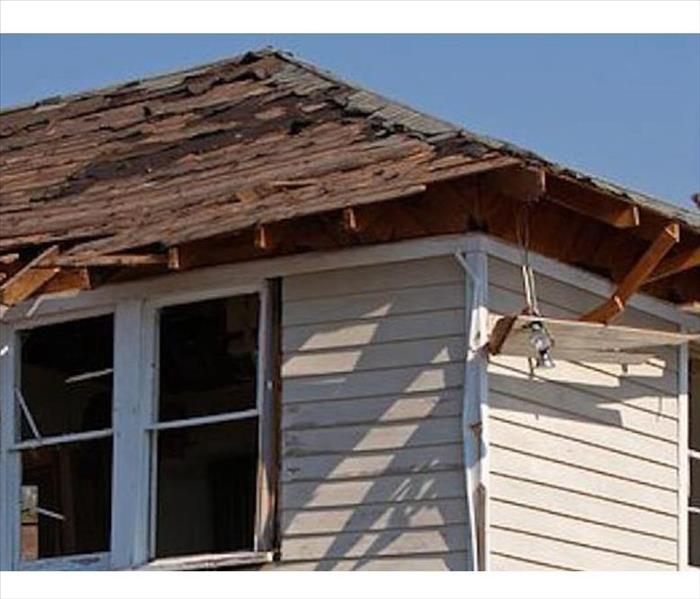 Protect your property from damaging winds!
Protect your property from damaging winds!
There are many concerns that come with severe storms, and damaging winds are always a threat. These winds, which can come with little to no notice, can be devastating and cause long-term structural impacts.
The Concern With Damaging WindsWhile many consider damaging winds to come from a tornado or hurricane, those are not the only times when they may come into play. Traditionally, damaging winds are considered those with wind speeds exceeding 50–60 mph. They can stem from a strong thunderstorm and are called “straight-line” winds, which cause damage much like tornadoes and, yet, the damage is different.
The damage from these winds can be especially destructive, as they can also cause loose objects on your property to become projectiles. Windows and the roof are especially vulnerable and can take the brunt of this damage, and if the damage is extensive, water damage can result inside the home as the outside elements are allowed indoors.
Anyone who lives in a thunderstorm-prone area will be at risk from damaging winds, but there are some structures that are especially at risk in winds over 80 mph, including mobile homes, even those that are anchored.
Protecting Your Property From Damaging WindsThere are a number of ways you can protect your property from damaging winds, but keep the “Two R’s” in mind: reinforce and remove. A few of these are listed below:
Have a professional reinforce your garage door.
Remove and/or anchor loose objects on your property, such as trash cans, grills and outdoor furniture, that could be moved or tossed by the wind.
Hire a professional to remove large or dying trees and branches that could fall over onto your home.
Not all high wind circumstances come with advanced warning, but some of these action items could be the difference between damage and little-to-no damage.
Also, when building a new home or renovating an older home, be sure the windows, walls and doors are up to code for the weather in your area.
Should your home ever be hit by damaging winds and resulting water damage, our highly trained specialists at SERVPRO® of Western Dutchess County are here to help with the cleanup and restoration of your home at all times of the day. Call us at 845-831-3600.
We can restore your home in Dutchess County after a storm!
10/30/2018 (Permalink)
 Let SERVPRO of Western Dutchess County handle your storm damage, no matter the season!
Let SERVPRO of Western Dutchess County handle your storm damage, no matter the season!
SERVPRO of Western Dutchess County can help make your storm damage "Like it never even happened."
When you are dealing with storm, flood, and water damage, immediate action is crucial. You should choose the company with storm damage experience and expertise that has the resources and equipment to handle the job. SERVPRO of Western Dutchess can respond immediately to storm and flooding conditions.
Have Storm or Flood Damage?
Call Us Today (845) 831-3600
Why Choose SERVPRO of Western Dutchess County?
- We're Faster to Any Size Disaster: When a storm hits your home or business, you need help immediately. Our quick response will help prevent secondary damage and help reduce restoration costs.
- We're Highly Trained Storm Damage Specialists: As leaders in the storm and water damage industry, we have advanced training and expertise, not to mention a tremendous amount of hands-on experience. We use this training and experience to quickly dry your home and restore it back to pre-storm condition.
- We're a Trusted Leader in the Water Restoration Industry
- We Have the Resources to Handle Storms and Disasters: In addition to our own resources, we can access equipment and personnel from over 1,700 Franchises across the state and country. We can even call upon strategically located Disaster Recovery Teams for catastrophic storms and major events.
- Locally Owned Company with National Storm Resources: As a locally owned and operated business, SERVPRO of Western Dutchess County is strategically located to respond quickly to your water or flood damage event. When a major storm or flood event occurs, we can call upon our national network of 1,700 SERVPRO Franchises and special Disaster Recovery Teams if we need additional resources or personnel.
We are proud to serve our Hudson Valley communities! Call 845-831-3600 today for help!
SERVPRO of Western Dutchess County is ready, no matter what, to handle any storm damage!
10/29/2018 (Permalink)
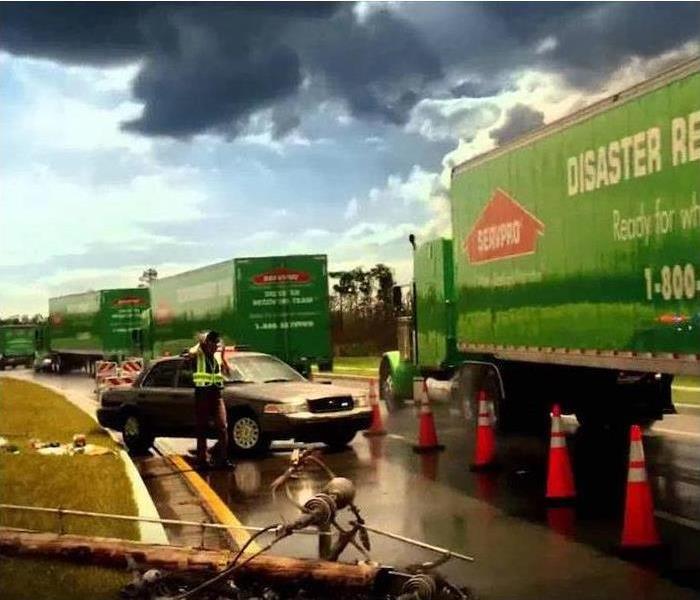 Our highly trained crews are ready to respond 24/7 to storm or flood damage in Dutchess County.
Our highly trained crews are ready to respond 24/7 to storm or flood damage in Dutchess County.
SERVPRO of Western Dutchess County specializes in storm and flood damage restoration. Our crews are highly trained and we use specialized equipment to restore your property to its pre-storm condition.
Faster Response
Since we are locally owned and operated, we are able to respond quicker with the right resources, which is extremely important. A fast response lessens the damage, limits further damage, and reduces the restoration cost.
Resources to Handle Floods and Storms
When storms hit Dutchess County, we can scale our resources to handle a large storm or flooding disaster. We can access equipment and personnel from a network of 1,650 Franchises across the country and elite Disaster Recovery Teams that are strategically located throughout the United States.
Have Storm or Flood Damage? Call Us Today 845-831-3600.
Storm Damage: What You Need to Know
9/19/2018 (Permalink)
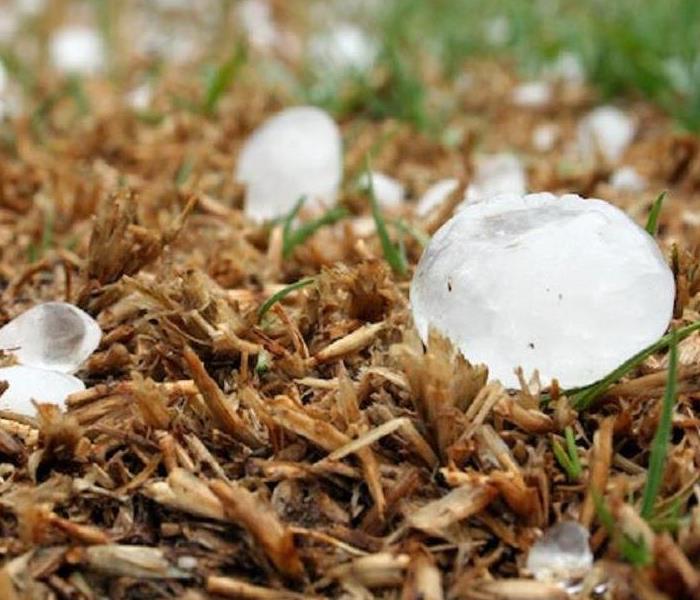 Call 845-831-3600 for all your storm damage needs!
Call 845-831-3600 for all your storm damage needs!
New York has seen its fair share of heavy rainfall in the past few months of summer 2018. Heavy rainfall and its accompanying floods are only some of the common types of damage from storms.
There are several major storm types:
- Hurricanes
- Tornadoes
- Snow storms
- Thunderstorms
- Tropical storms
Under 100 miles to the Atlantic Ocean, Dutchess County is not unfamiliar with storms caused by severe tropical weather. Since Dutchess County is also so far north and close to the coast, it’s very likely that residents might experience each of these types of storms.
The fact remains that hurricanes can still cause damage far past the coast. New Yorkers remember just how widespread the damage from Hurricane Sandy was.
During a hurricane, most damage is caused by a combination of floods, storm surge, and wind.Storm surge: the most damageAs a hurricane approaches the shore, its powerful winds push extra water along with it. If the wind is powerful enough, it can push so much water shoreward that the water has nowhere to go but up and inland. This is storm surge: when the water level rises so far high above the predicted tide level and then surges inward toward land. The force of storm surge can be strong enough to destroy buildings and roads.
Floods: the most commonFloods tend to be incredibly common and seemingly inevitable in hurricanes. They are caused by heavy rainfall and by storm surge. A tropical storm can cause widespread heavy rain, as far out as 100 miles. This much surplus water cannot drain quickly enough or properly and thus causes flooding.
Wind: the speediestWinds that come from hurricanes range from 74 mph to 155 mph. At this speed and force, winds can cause substantial damage. Not only can wind knock down trees, but it can also carry those trees as well as other debris and hurl them into buildings, vehicles, or anything else in its path.
The damage from storm surge, floods, and winds can be overwhelming to deal with. After a storm, call SERVPRO of Western Dutchess County to make it like it never even happened.
Floods and Storm Damage: How to Prepare
9/13/2018 (Permalink)
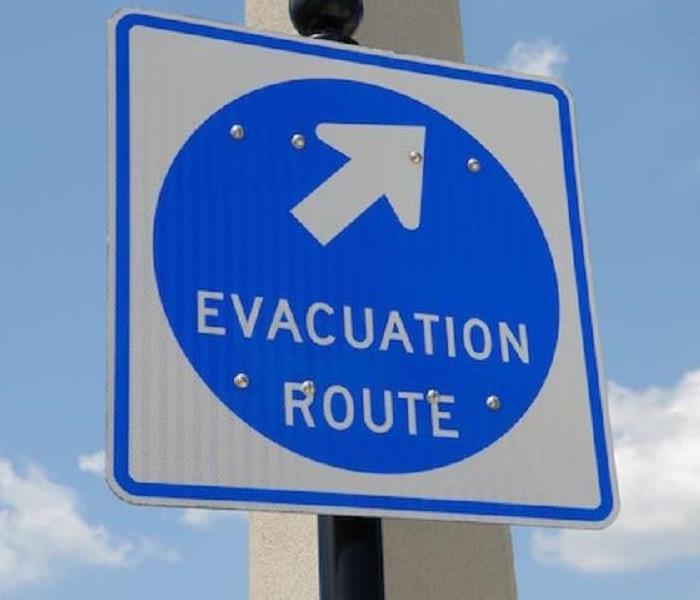 Call 845-831-3600!
Call 845-831-3600!
Did you know that climate change is increasing the chance of floods even in areas previously considered to be [low risk]?(https://www.economist.com/briefing/2017/08/31/the-likelihood-of-floods-is-changing-with-the-climate) As rainfall increases, so do floods. As heavy rain has continued to fall in New Jersey in recent months, it’s more important than ever to be prepared for flooding.
If at least two properties (or acres) are totally or partially submerged in water, then a flood has occurred.
But safety will always matter a lot more than a legal definition if a flood does occur.
To prepare for a flood and storm damage, you should be able to answer these questions:
- Do you know the risk of a flood?
- Are you prepared for a flood?
- Are you able to evacuate if needed?
Follow these guidelines to prepare for flood and storm damage.Before a storm ever hits, you should know the chances of flooding. The best resources for this? The local government or FEMA office. The more informed you are, the better prepared you are. For the Western Dutchess County area, start here.
You could also buy a weather radio to stay informed about possible storms and flooding.
All households should have an emergency preparedness kit. Your car and office should also have an emergency kit. For floods, a smart tip is to store important documents in water proof casing. Flood waters can contaminate usual water sources (like the kitchen tap), so it becomes extra important to keep fresh, clean water in your emergency kit. If you aren’t sure how to prepare a kit, read this.
An emergency generator is equally important as an emergency preparedness kit. Severe storms have the ability to knock out the power grid for your area. An emergency generator will keep the lights on in the event of a storm. The size of your house and its power needs influence the kind of generator that you need.
An evacuation order might be issued. Evacuation orders are common under the threat of severe storms and flooding. It’s important that you know how to follow this order if it comes. To learn the official evacuation procedure, contact your local government. You can use this procedure as a jumping point for creating a family evacuation policy. The entire family should practice the evacuation plan until everyone has it memorized.
Remember, high flood waters can conceal damage and debris. Always use caution.
After a flood has receded and it’s time to clean up the damage, call SERVPRO® of Western Dutchess County.
Building Your Family’s Emergency Kit the Right Way | SERVPRO® of Western Dutchess County
6/28/2018 (Permalink)
 Call 845-831-3600 if you'd like help building your emergency kit!
Call 845-831-3600 if you'd like help building your emergency kit!
In 2017, over $306 billion in damage was declared that directly correlated to natural disasters. Emergency situations happen now more than ever, and being prepared is a sound investment in safety and peace of mind.
At SERVPRO®, we’re committed to educating the community about emergency preparedness. That’s why we’ve assembled tips on how to pack a natural disaster kit for the whole family, so you can have everything you need until help arrives:
Food and Water: When deciding how to pack food and water rations, it’s recommended to set aside a 72-hour supply per family member. Not sure what to include? Shelf-stable items like granola bars, trail mixes or nearly anything you might find in a store’s camping section are filling, require no preparation and don’t take up much space. If you have pets, the same 72-hour rule applies to their food and water as well.
Tip: Canned foods and dehydrated dinners are great, but typically require the use of a camping stove or water heater to prepare.
Stay Comfortable: Remember your emergency kit is for the worst-case scenario—meaning you might be dependent on it for anywhere from a few hours to a few days. Things like pillows, blankets and extra clothes might not seem important, but you wouldn’t want to go several days without them. Keep the living space sanitary by packing practical items like hand sanitizer and paper towels as well.
Tip: Pack cards, books and puzzles for the kids (and adults!) to pass the time with.
Odds and Ends: The odds and ends regularly get overlooked, but are often the handiest items. Remember the first-aid kit, as well as any prescription medication, copies of important documents, and cash or travelers’ checks. Additionally, survivalist tools such as flashlights, headlamps, a Swiss Army Knife and duct tape are useful for many situations, with the added benefit of taking up almost no space.
Tip: Forgetting something? Make note of everything your family uses in a three-day period—chances are, if they use it, you should pack it.
If you need help with disaster preparedness or recovery, SERVPRO can help. Contact our Western Dutchess County location today to get connected with our team of professionals.
How to Prepare for Spring Rains | SERVPRO® of Western Dutchess County
6/28/2018 (Permalink)
 Call 845-831-3600 to help with your storm damage today!
Call 845-831-3600 to help with your storm damage today!
April showers bring May flowers, but if you’re not careful, they can also bring water damage. The promise of spring is exciting, but don’t forget to take the steps to prepare your home—it only takes an afternoon and will ensure your home stays dry through the strongest of storms.
SERVPRO® knows what it takes to prepare your home for rain because we know what happens when you don’t. We never know what Mother Nature will throw our way, but we do know how to be prepared.
###Perform a Roof Inspection for Existing Damage
Naturally, your roof is one of the biggest defenses you have against a rainstorm, so it’s important to check it thoroughly. When homeowners take the time to climb up on the roof, they are often shocked to find they already have storm damage that was invisible from the ground.
Because we never know how severe spring showers will become, making repairs in advance is the best way to keep the problem from getting worse.
###Declutter Your Gutters
You probably clean your gutters every autumn, but spring is a good time to give them another pass. As debris builds up, water drains more and more slowly—meaning if a heavy shower falls, your home will be absorbing the excess.
Taking the time to clean out your gutters will keep water flowing away from your home instead of into your foundation.
###Check the Seal of Windows and Doors
Doors and windows are generally sturdy, but with age and weather comes eroding resiliency. The sealant surrounding windows and exterior doors can flake away over time, giving moisture a hiding spot and mold a home.
As water starts to seep in, exterior walls become soaked and unsupportive, which can cause a plethora of structural issues. Taking the time to re-seal these seams ensures rain will stay where it’s supposed to be—outside.
Spring is an exciting season, but only if your home is protected from the elements. Taking an afternoon for spring maintenance will give you peace of mind and keep your family dry through many storms to come.
If you need help knowing how to prepare your home or if you’ve suffered water damage, SERVPRO of Western Dutchess County has trained professionals ready to help!
SERVPRO of Western Dutchess County Can Help With Your Storm Damage!
3/21/2017 (Permalink)
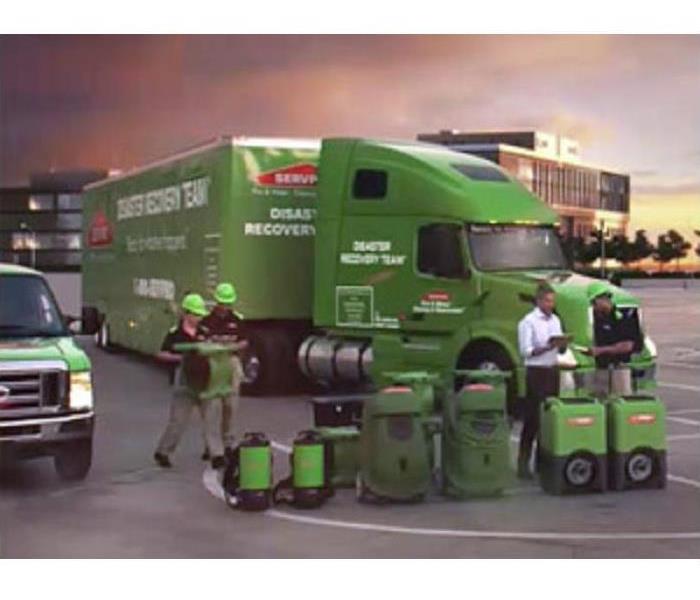 SERVPRO of Western Dutchess County can help make your storm damage "Like it never even happened."
SERVPRO of Western Dutchess County can help make your storm damage "Like it never even happened."
When you are dealing with storm, flood, and water damage, immediate action is crucial. You should choose the company with storm damage experience and expertise that has the resources and equipment to handle the job. SERVPRO of Western Dutchess County can respond immediately to storm and flooding conditions.
Have Storm or Flood Damage?
Call Us Today (845) 831-3600
Why Choose SERVPRO of Western Dutchess County?
- 24/7 Emergency Services
- We're Faster to Any Size Disaster: When a storm hits your Dutchess County home or business, you need help immediately. Our quick response will help prevent secondary damage and help reduce restoration costs.
- We're Highly Trained Storm Damage Specialists: As leaders in the storm and water damage industry, we have advanced training and expertise, not to mention a tremendous amount of hands-on experience. We use this training and experience to quickly dry your home and restore it back to pre-storm condition.
- We're a Trusted Leader in the Water Restoration Industry
- We Have the Resources to Handle Storms and Disasters: In addition to our own resources, we can access equipment and personnel from over 1,700 Franchises across the state and country. We can even call upon strategically located Disaster Recovery Teams for catastrophic storms and major events.
- Locally Owned Company with National Storm Resources: As a locally owned and operated business, SERVPRO of Western Dutchess County is strategically located to respond quickly to your water or flood damage event. When a major storm or flood event occurs, we can call upon our national network of 1,700 SERVPRO Franchises and special Disaster Recovery Teams if we need additional resources or personnel.
We are proud to serve our Hudson Valley communities! Call 845-831-3600 today for help!
When winter weather strikes, SERVPRO strikes back!
3/13/2017 (Permalink)
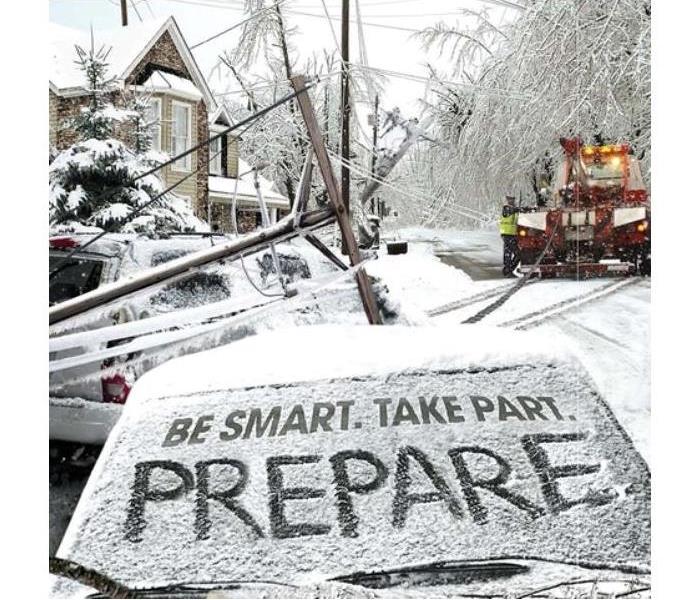 Winter Weather Storm Damage
Winter Weather Storm Damage
Did a winter storm cause water damage in your Dutchess County, NY home or business? Here's some winter weather tips!
This last storm for the Hudson Valley area predicted 16-24 inches of snow and severe cold temperatures. That can lead to water damage, roof damage, broken pipes & ice damming. SERVPRO of Western Dutchess County wants to make sure you are prepared for storms and know what to do in case you do have a damage!
Tips for Preparing your Home for Winter Weather:
- Keep cabinet doors open during cold spells. This allows warm air to circulate around pipes.
- Keep a slow trickle of water flowing through faucets, especially if the pipes for faucets run through unheated or uninsulated areas of the home.
- Consider shutting off outdoor faucets. Find the shutoff valve in the basement or crawl space and turn it to "off".
- If you follow the previous step, then open the outdoor faucet to help ensure it drains completely and the inner valve is shutoff.
- Ensure gutters are clean and secure. Leaves and debris accumulate, causing a damming effect on gutters, which could lead to roof problems and water damage.
- Proper maintenance of your furnace can help reduce the risk of puffbacks.
Tips for Preparing your Business for Winter Weather:
- Check your business property for downed tree limbs and branches. Weather, such as wind, heavy rain, ice and/or snow, can cause branches to fall which would cause damage to the property and potentially cause personal injuries.
- Inspect property, especially walkways and parking lots, for proper drainage to alleviate flood hazard potential.
- Inspect all handrails, stairwells and entryways to address and correct potential slippery or hazardous areas. Install mats or non-slip surfaces and post caution signs where water could be present.
- Ask SERVPRO of Western Dutchess County about creating an Emergency Ready Profile for your business for any future or potential emergencies.
If your Dutchess County home or business experiences water damage, broken pipes or ice damming, don't hesitate to contact SERVPRO of Western Dutchess County at 845-831-3600. We'll make it "Like it never even happened."
When Storms or Floods hit Ulster County, SERVPRO is ready!
6/14/2016 (Permalink)
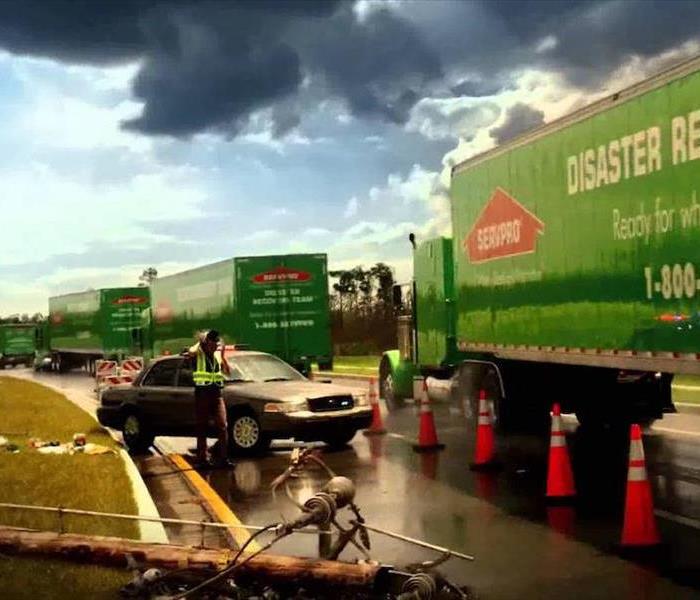 Our highly trained crews are ready to respond 24/7 to storm or flood damage in Dutchess & Ulster County.
Our highly trained crews are ready to respond 24/7 to storm or flood damage in Dutchess & Ulster County.
SERVPRO of Kingston/New Paltz specializes in storm and flood damage restoration. Our crews are highly trained and we use specialized equipment to restore your property to its pre-storm condition.
Faster Response
Since we are locally owned and operated, we are able to respond quicker with the right resources, which is extremely important. A fast response lessens the damage, limits further damage, and reduces the restoration cost.
Resources to Handle Floods and Storms
When storms hit Ulster County, we can scale our resources to handle a large storm or flooding disaster. We can access equipment and personnel from a network of 1,650 Franchises across the country and elite Disaster Recovery Teams that are strategically located throughout the United States.
Have Storm or Flood Damage? Call Us Today 845-255-4334
Flooding, Water & Storms: Hurricane Season is Upon Us Hudson Valley
6/14/2016 (Permalink)
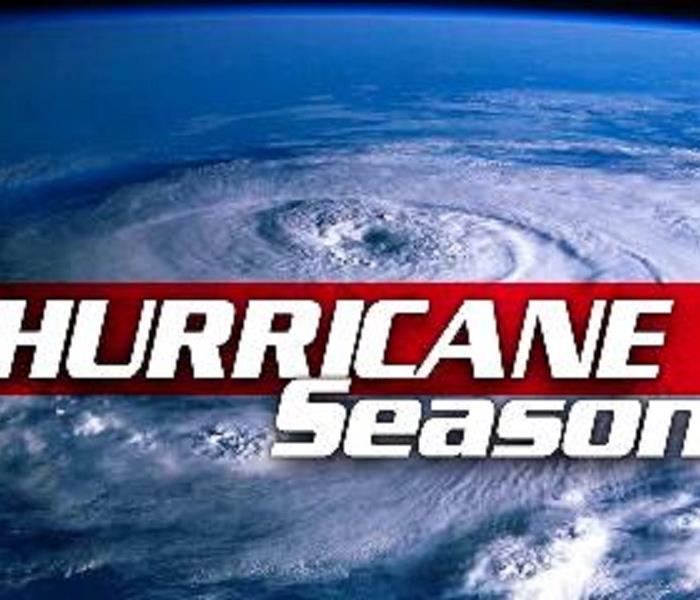 Hurricane Season could affect Dutchess & Ulster County.
Hurricane Season could affect Dutchess & Ulster County.
June 1st marks the official start of the hurricane season. After experiencing Hurricane Irene and Super Storm Sandy in the Hudson Valley, the importance of Hurricane Preparedness is at an all time high. Here at SERVPRO of Western Dutchess County & SERVPRO of Kingston/New Paltz, we want to make sure that you and your customers are prepared in case another hurricane sweeps through our area. Here are some tips for you to follow to help prepare for the unexpected!
“WATCH” is issued when there is a threat of hurricane conditions within 24-36 hours.
“WARNING” is issued when hurricane conditions are expected in 24 hours or less.
Hurricane Preparedness Tips:
Have an emergency supply pack assembled and on-hand. Some items to include:
o Bottled Water
o Blankets, pillows & sleeping bags
o Flashlights
o Extra Batteries
o Portable, battery operated radio
o First Aid Kit
o Non-perishable food items for family members, as well as pets
o Non-electric can opener
o Prescription Medication
o Cash and credit cards
o Sturdy shoes such as sneakers and work boots
1. Protect your windows by boarding them up before the hurricane strikes.
2.Trim back branches from trees to avoid falling debris.
3. Check into your home and auto insurance to see exactly what is and is not covered.
4. Set up an emergency communication plan with family members and friends in case of an emergency.
Develop an Emergency READY Profile for FREE through SERVPRO and have all the critical emergency information at your fingertips before disaster strikes! FREE SERVICE. FREE APP. LIFE SAVING TOOL.
And in the event of any damage caused by storms, call us to help make your disaster “Like It Never Even Happened™”
845-831-3600 or 845-255-4334
Preparing for Hurricane Season!
5/28/2014 (Permalink)
June 1st marks the official start of hurricane season.
Here are some tips for you to follow to help prepare for the unexpected!
Hurricane Tips:
1. A “watch” is issued when there is a threat of hurricane conditions within 24-36 hours. A “warning” is issued when hurricane conditions are expected in 24 hours or less.
2. Have an emergency supply pack assembled and on-hand. Some items to include:
• Bottled Water
• Blankets, pillows & sleeping bags
• Flashlights
• Extra Batteries
• Portable, battery operated radio
• First Aid Kit
• Non-perishable food items for family members, as well as pets
• Non-electric can opener
• Prescription Medication
• Cash and credit cards
• Sturdy shoes such as sneakers and work boots
3. Protect your windows by boarding them up before the hurricane strikes.
4. Trim back branches from trees to avoid falling debris.
5. Check into your home and auto insurance to see exactly what is and is not covered.
6. Set up an emergency communication plan with family members and friends in case of an emergency.
 One of many homeowners that SERVPRO recently helped during terrible flooding conditions in the middle of August. SERVPRO to the rescue!
One of many homeowners that SERVPRO recently helped during terrible flooding conditions in the middle of August. SERVPRO to the rescue!





 24/7 Emergency Service
24/7 Emergency Service




































